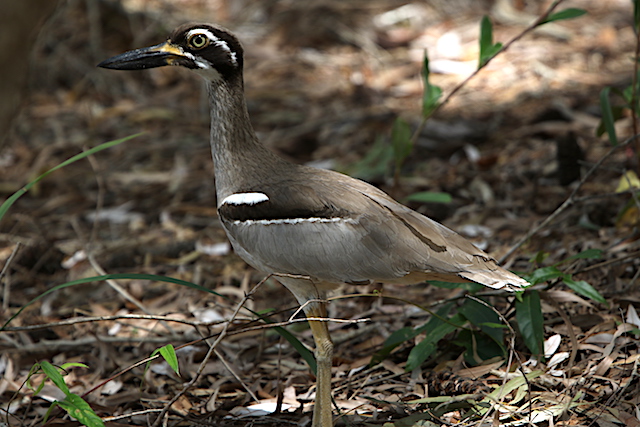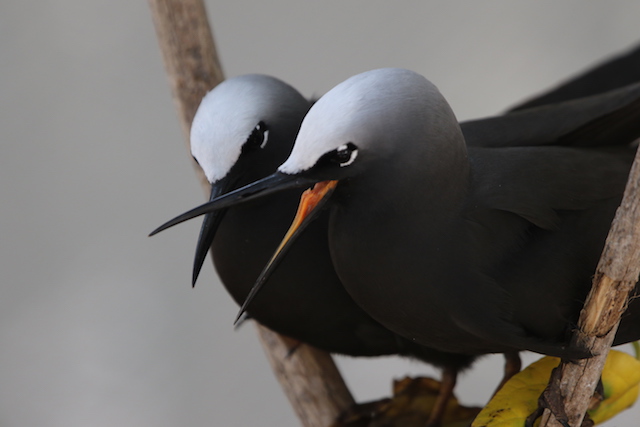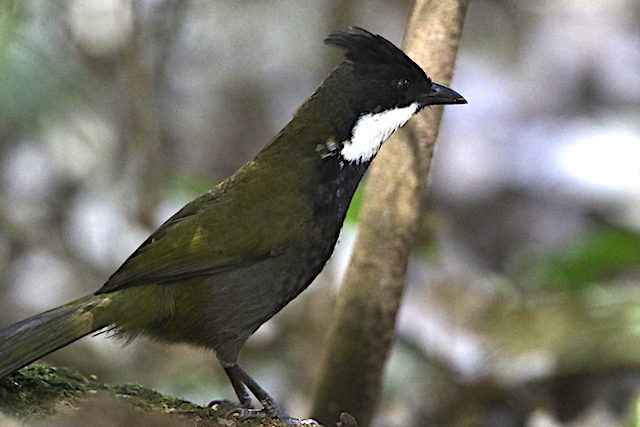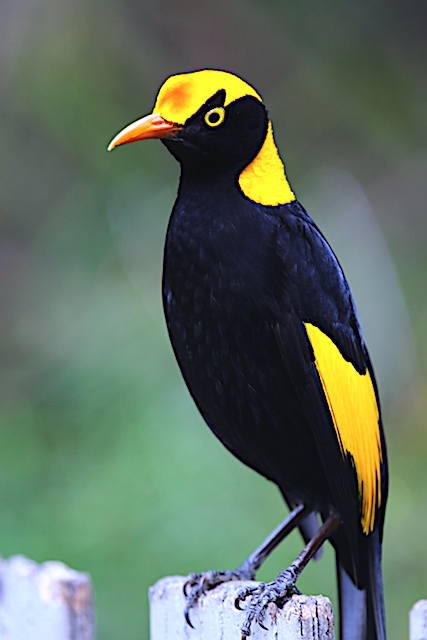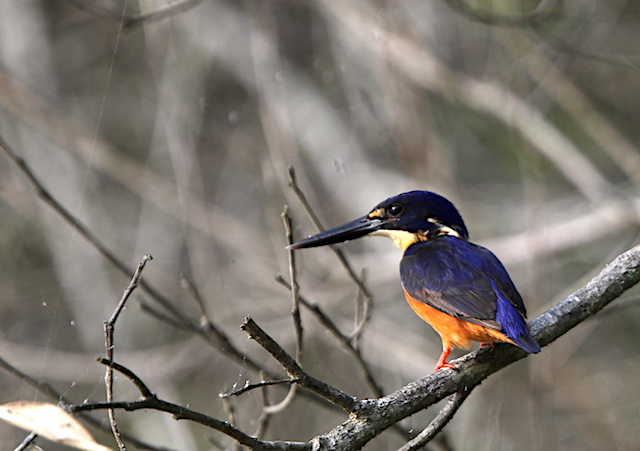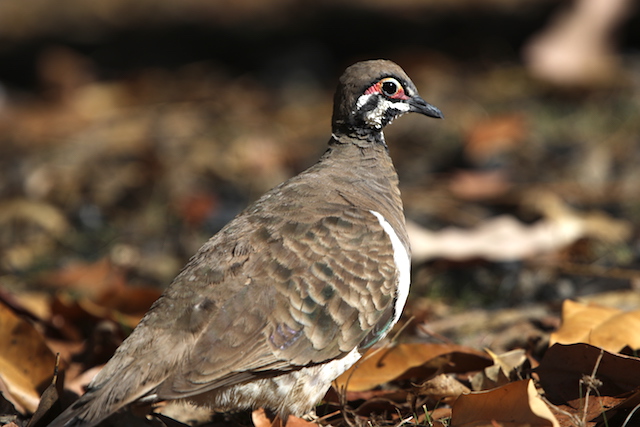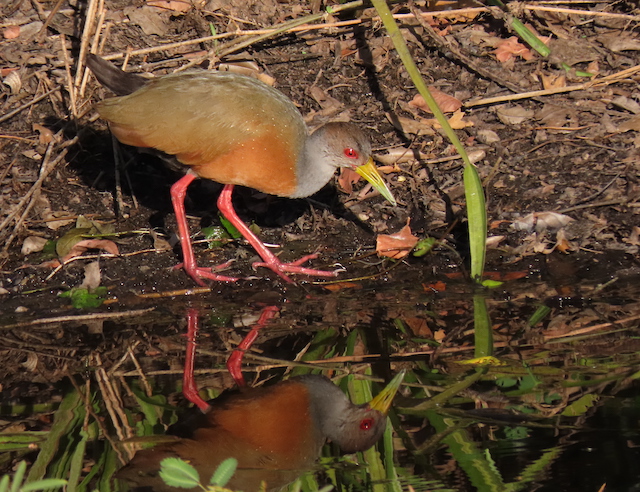From the Field
October 30:
Gavin reports from Victoria and Tasmania, Australia Part 2
The other half of the Victoria and Tasmania tour concentrates on the incredibly scenic Victoria coastline, from famous spots like the Bay of Islands and the Twelve Apostles, to the heathlands south of Melbourne and the stunning coastline of Tasmania. We started off around Melbourne, getting to know a few common but flashy birds like Superb Fairywren, Rainbow Lorikeet and New Holland Honeyeater, as well as a few more reticent one such as Rufous Bristlebird. Our final few days of the tour are spent in Tasmania, where we located all of the Tasmanian endemics, including the staid Dusky Robin, skulky Scrubtit, brilliant (and not so green) Green Rosella, hulking Tasmanian Native-Hens, and endangered Forty-spotted Pardalote. We also enjoyed intimate views of the critically endangered Swift Parrot, seeing perhaps as much as 20% of the extant global population. Mammals were prevalent on Bruny, with daily view of several species like Bennet’s Wallabies, Tasmanian Pademelons, Common Brushtail Possums and several Eastern Quolls. We wrapped up the trip with 260 species of birds and 17 mammals. With the breadth of wildlife and scenery this tour never fails to deliver, and I very much look forward to returning to this corner of the country in 2024.
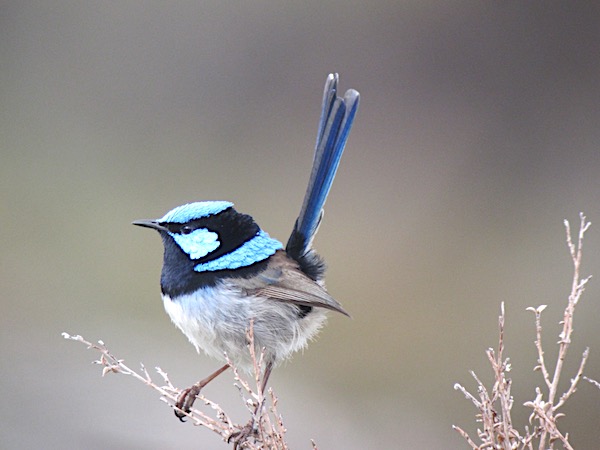
Superb Fairywren
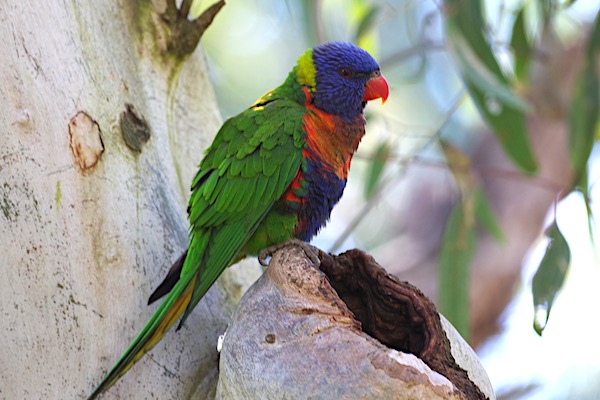
Rainbow Lorikeet
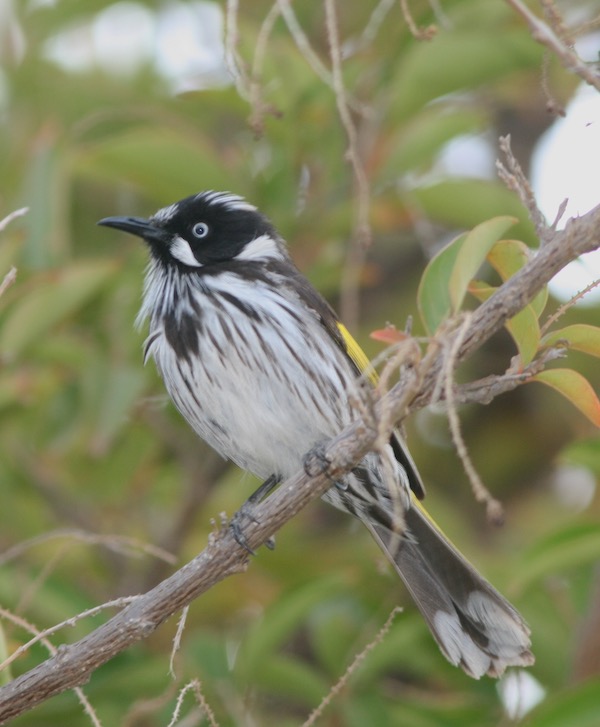
New Holland Honeyeater
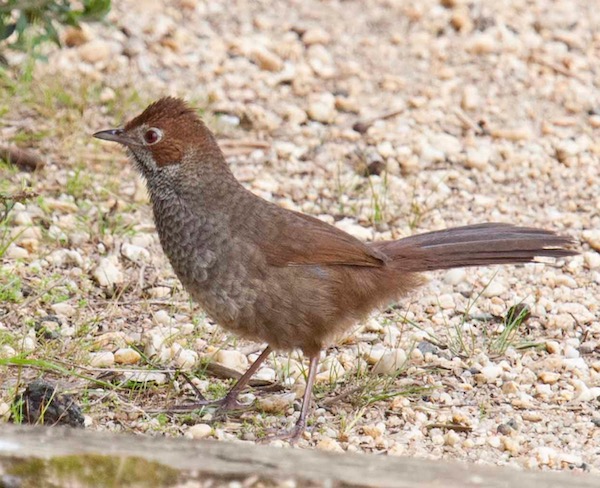
Rufous Bristlebird
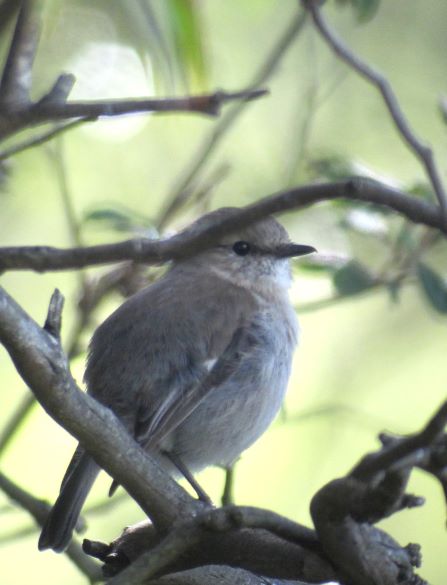
Dusky Robin
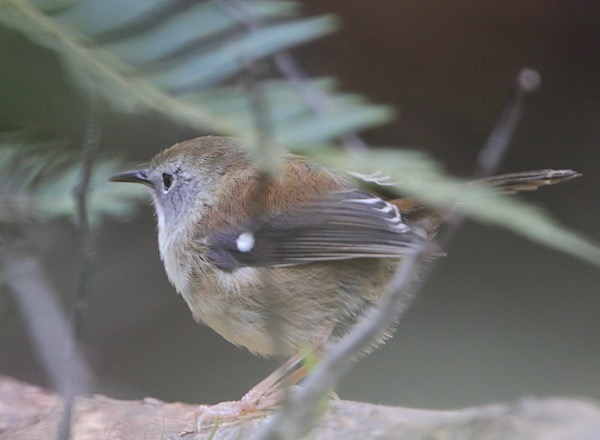
Scrubtit
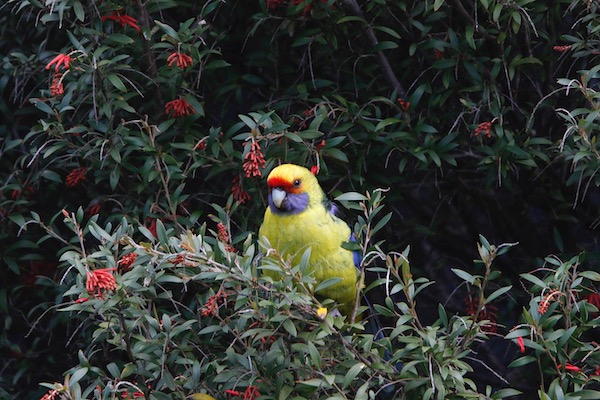
Green Rosella
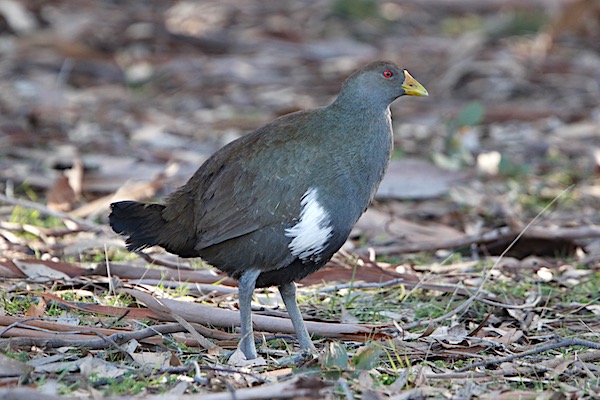
Tasmanian Native-hen
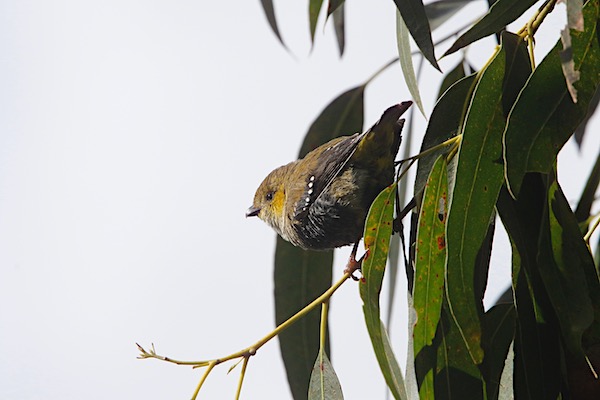
Forty-spotted Paradote
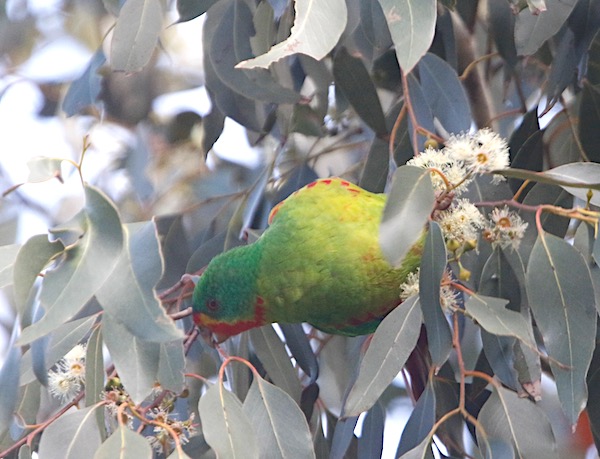
Swift Parrot
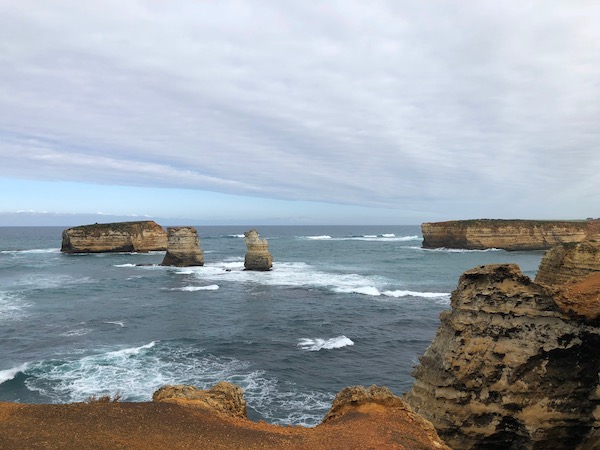
Bay of Islands
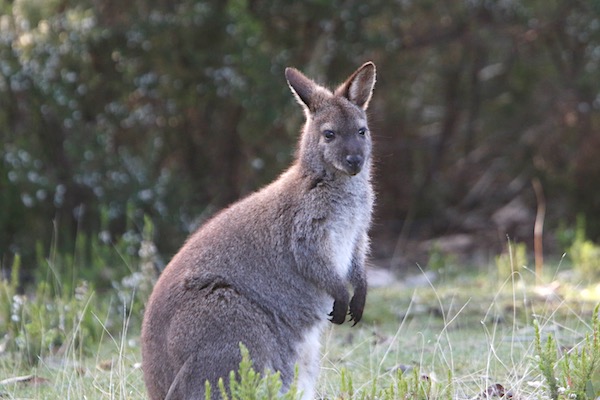
Bennet's Wallaby
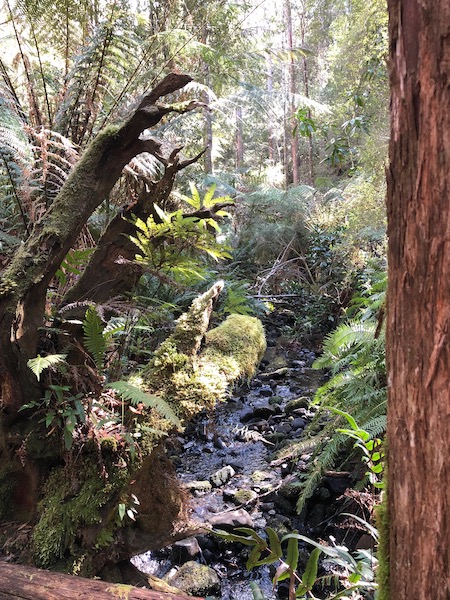
Bruny Island, Tasmania
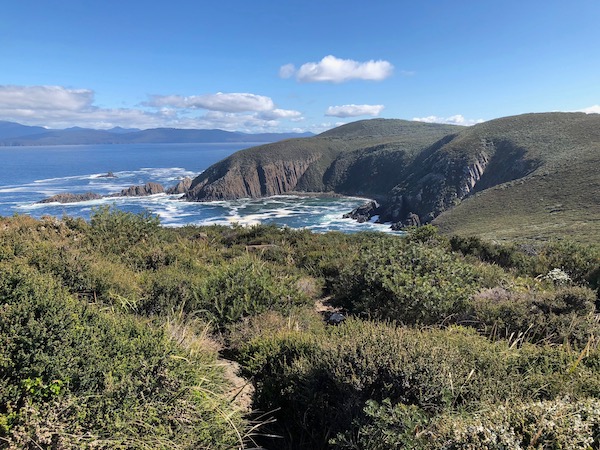
Cape Bruny
October 30:
Gavin reports from Victoria and Tasmania, Australia Part 1
On our 2022 tour of Southeastern Australia covered a large loop around the state of Victoria (and a bit of New South Wales). Our first few days around Melbourne were unfortunately caught by a passing storm, with blustery winds and rain. As we headed inland though conditions improved greatly, and by the time we returned to the coast it felt much more like spring. The wet forests around Healesville produced our hoped-for birds like Superb Lyrebird, Satin Bowerbird and Gang-Gang Cockatoo, as well as some extreme close ups of Common Bronzewings, Fan-tailed Cuckoo, Spotted Pardalote, and Sulphur-crested Cockatoos. The comparatively arid plains of central New South Wales were kind to us, with a brilliant pair of Plains-Wanderers showing very well and a muppet-like Tawny Frogmouth sitting on a roadside nest. In the giant mallee parks of Northwestern Victoria, we enjoyed a near-perfect day in the field, with Striated Grasswren performing extremely well, showy Pink Cockatoos, a perched Chestnut Quailthrush that lingered for over five minutes, perched Regent Parrots, nesting Red-capped Robins and stunning Splendid Fairywrens; always a crowd-pleaser. As the temperatures climbed, we began to spot a few non-avian species as well, like a handsome Central Bearded Dragon and quizzical looking Shingleback.
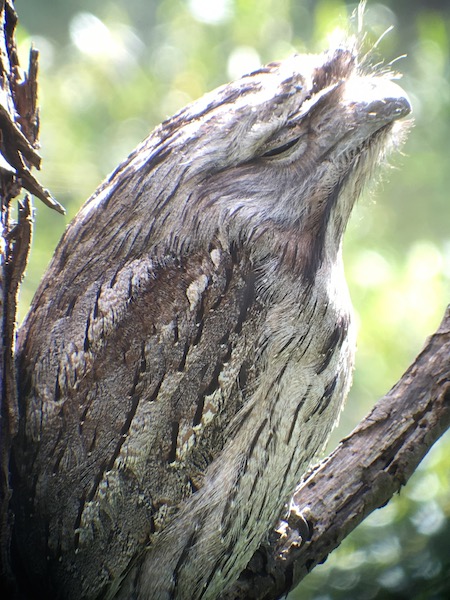
Tawny Frogmouth
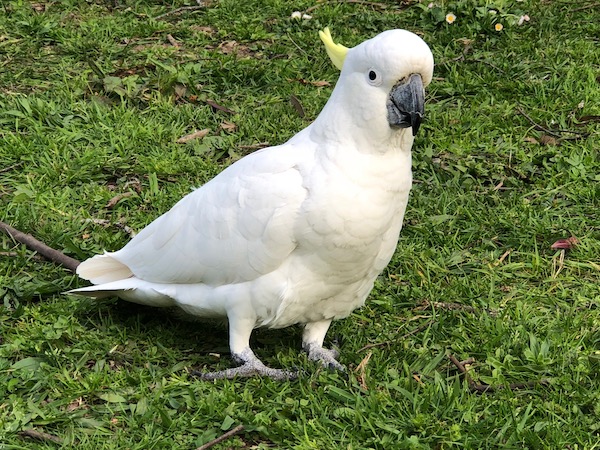
Sulphur-crested Cockatoo
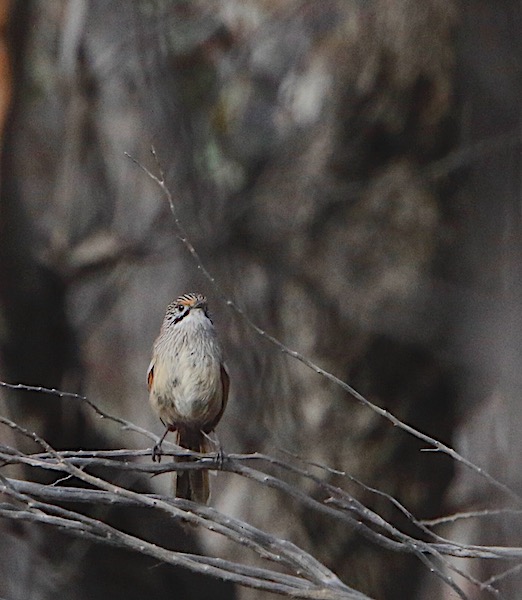
Striated Grasswren
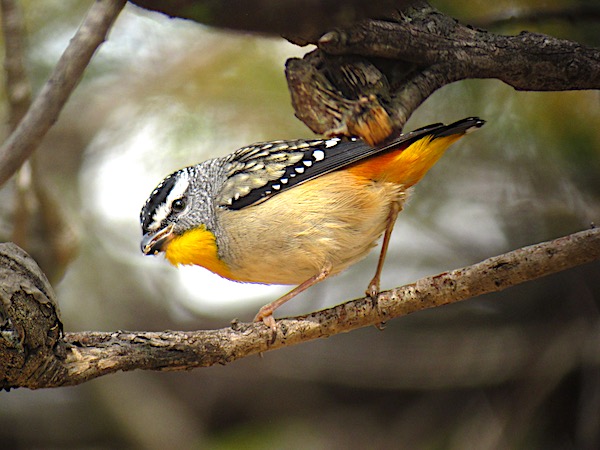
Spotted Paradote
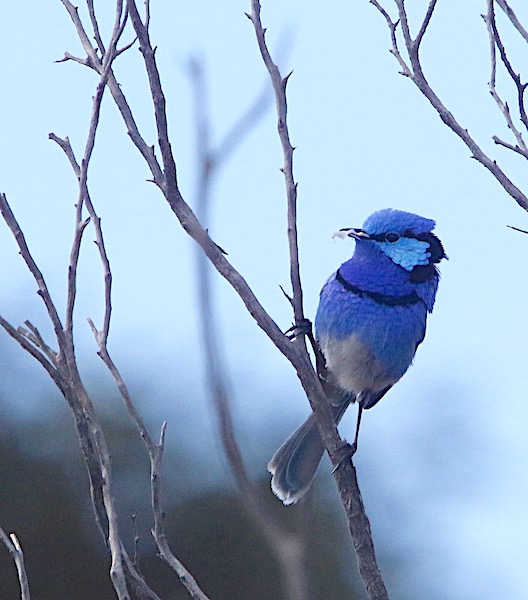
Splendid Fairywren
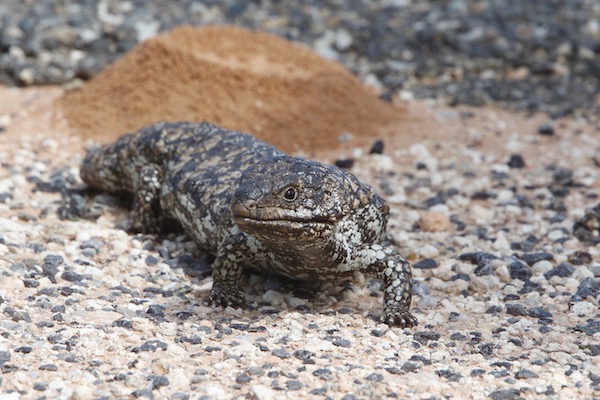
Shingleback
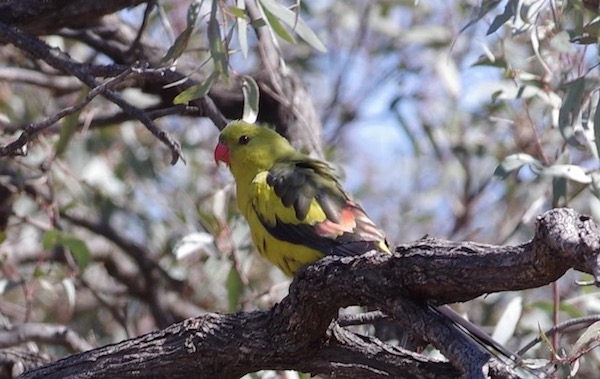
Regent Parrot
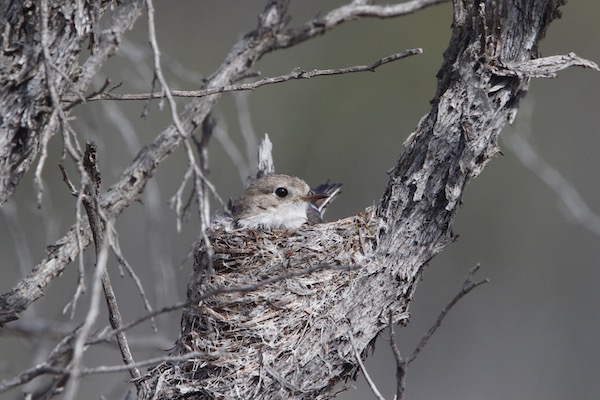
Red-capped Robin
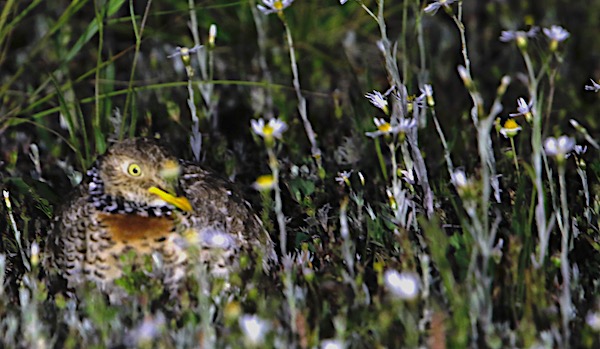
Plains-wanderer
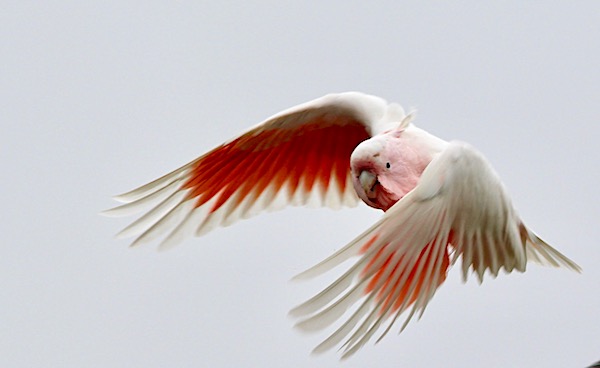
Major Mitchell's Cockatoo
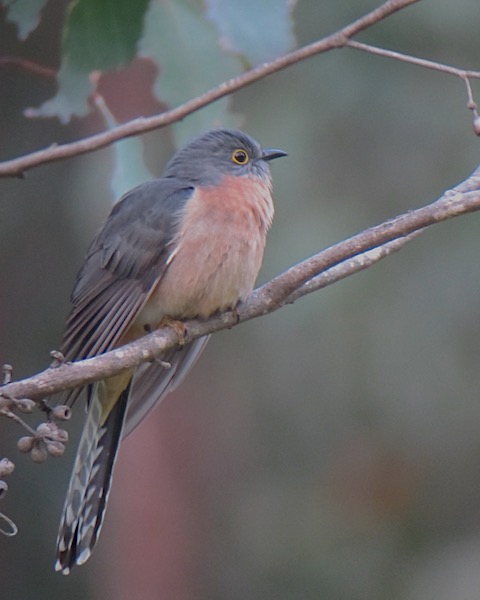
Fain-tailed Cuckoo
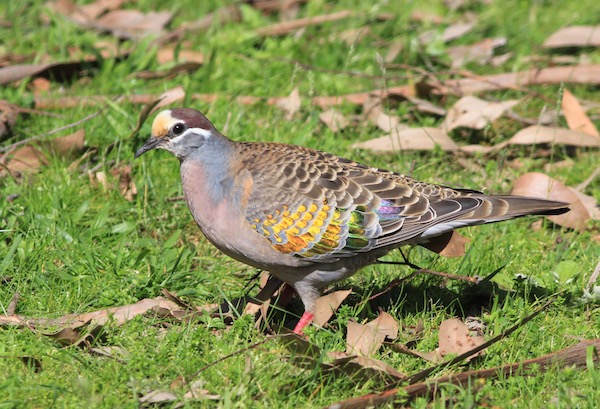
Common Bronzewing
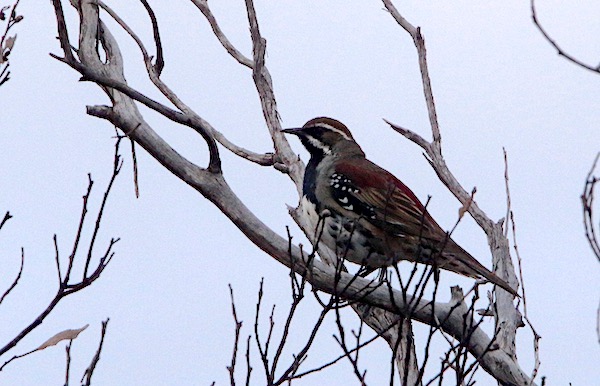
Chestnut Quail-Thrush
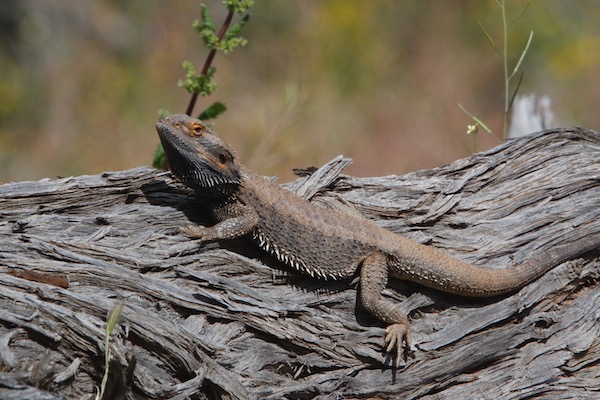
Central Bearded Dragon
October 28:
Gavin reports from Queensland and New South Wales, Part 2
The second half of our Eastern Australia kicked off on the idyllic Lady Elliot Island, on the southern edge of the Great Barrier Reef. Here we marveled at nesting Black Noddies just feet from our lenses, as well as a host of other seabirds and a wide array of marine life, including several gorgeous reef fish like Lagoon Triggerfish.
A stop in at Inskip Point a bit to the south of Lady Elliot revealed some very cooperative Beach Thick-Knees and stunning Blue-faced Honeyeaters that were busily eating winged ants that were emerging from the ground in a small city park. A little to the south around the famous O’Reilly’s Lodge the birds are almost tame, and forest birds often come to investigate your shoelaces. Normally shy Eastern Whipbirds, Crimson Rosellas and gorgeous Regent Bowerbirds are common visitors around the lodge, where they look over (or from) your shoulder for any dropped tidbits.
After O’Reilly’s we flew down to Sydney where we spent some time in the stunning and large Royal National Park that lies just a little to the south of the city. This park provided a great and scenic backdrop for our final day and a half, with a family group of Powerful Owls on a day roost and a repeated and excellent views of the aptly named Superb Fairywren. Our pelagic was unfortunately cancelled this year, but we spent the day well, birding around Sydney and connecting with our first Australian Reed-Warblers and this handsome Eastern Blue-tongued Skink. We finished the Eastern Tour with an impressive 281 species, and an amazing 413 species for the two tours combined. It is always with a touch of sadness that I board the plane to leave this amazing continent, and I very much look forward to next year’s duo of tours!
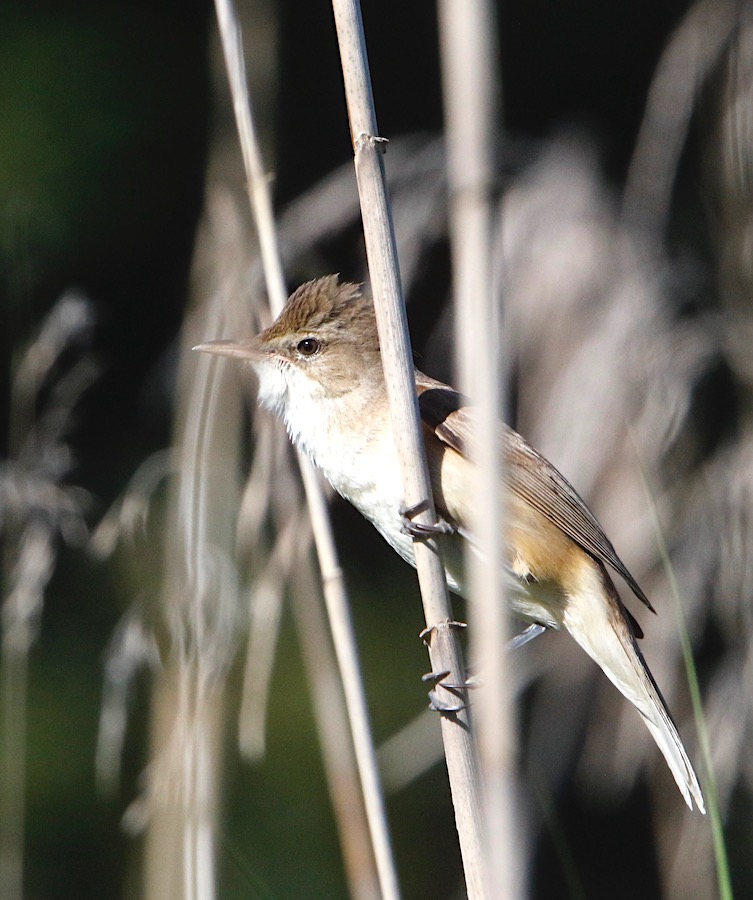
Australian Reed Warbler
Beach Thick-knee
Black Noddy
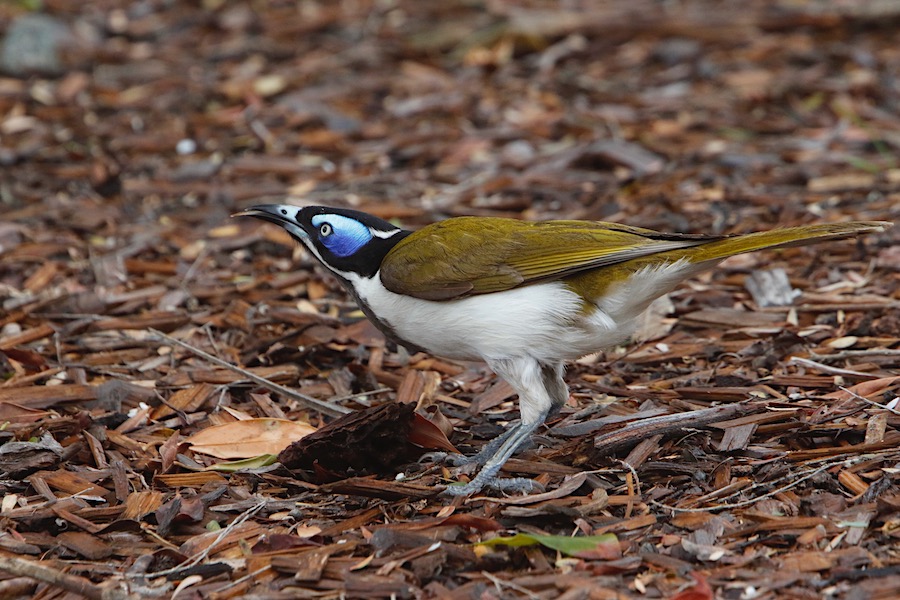
Blue-faced Honeyeater
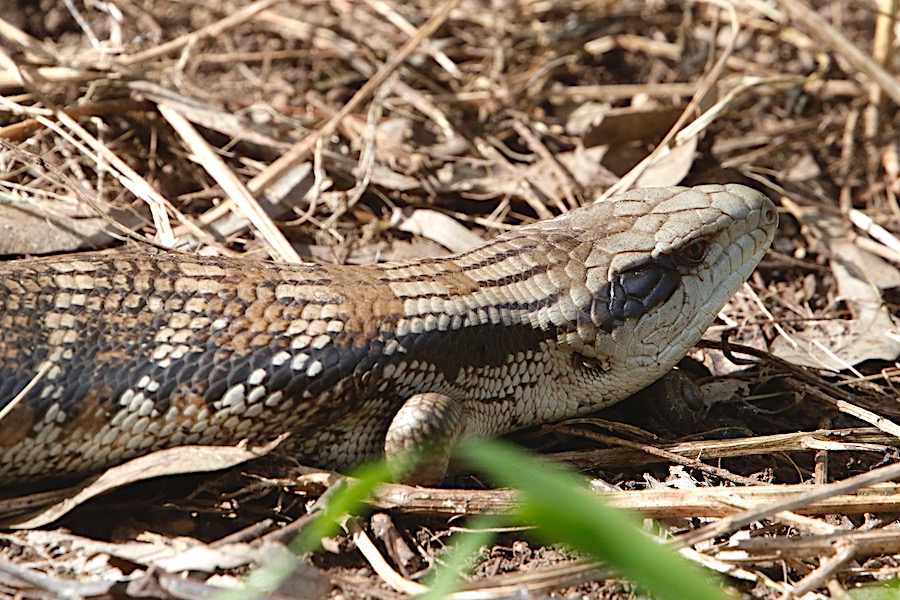
Eastern blue-tongued skink
Eastern Whipbird
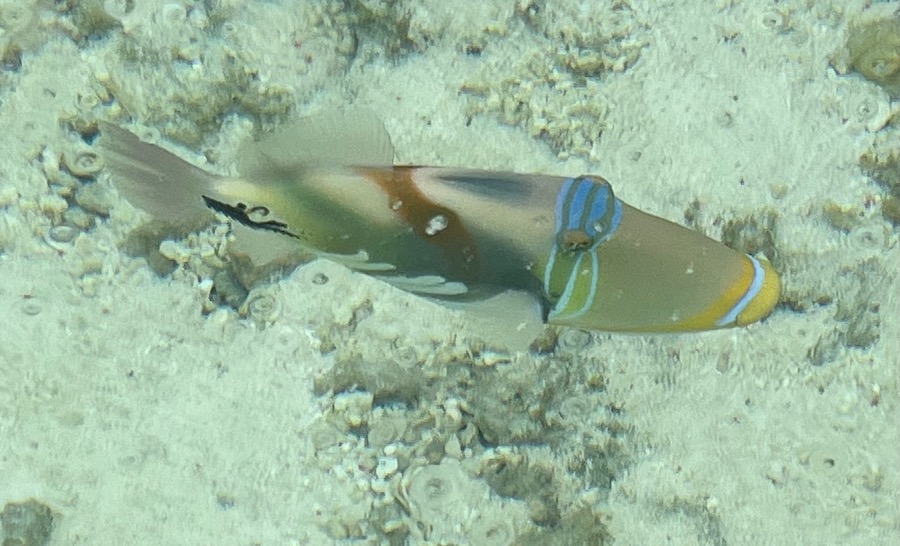
Lagoon Triggerfish
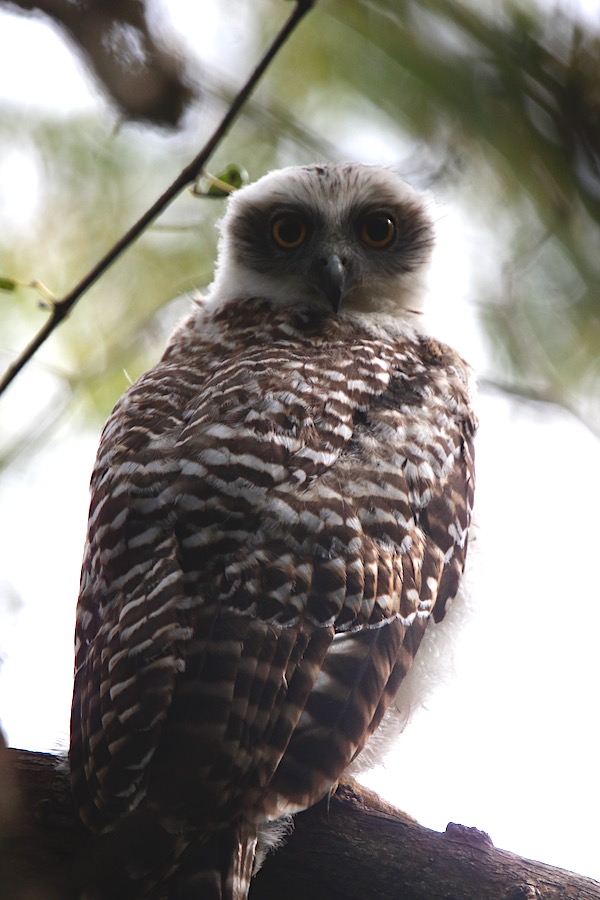
Powerful Owl
Regent Bowerbird
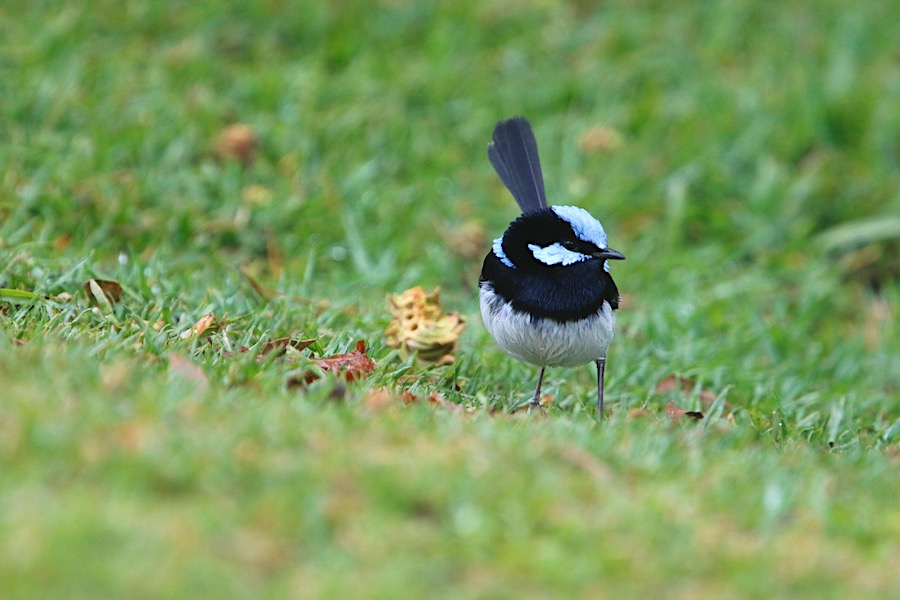 Superb Fairywren
Superb Fairywren
October 28:
Gavin Bieber reports from Queensland & New South Wales, Australia Part 1
Our Eastern Australia Tour that covers Queensland and coastal New South Wales kicked off with a fantastic week around Cairns and the Atherton Tablelands. This region hosts the highest diversity of species in the country, including many of the continent’s signature species. We had incredible experiences with many of these this year. Just a sampling of our favorite sightings included a family group of Southern Cassowaries foraging on fallen fruit along the Barron River, male Australian Bustards strutting their stuff in the dry savannah near Mount Carbine, perched Azure Kingfishers along the Daintree River, dumpy and ridiculously tame Squatter Pigeons feeding around the carpark of Granite Gorge and nesting Peregrine Falcons perched below us at the Mount Hypipamee Crater. Our views of Spotted Catbird, Yellow-throated Scrubwren, and the attractive Macleay’s Honeyeater in the rainforests of the Atherton Tablelands were particularly excellent this year. As always, tours to Australia are never solely about the birds; and in particular our lengthy views of Platypus near Yungaburra (one of an impressive 23 species of mammals for the tour) and this smart looking Boyd’s Forest Dragon were a real highlight for many. 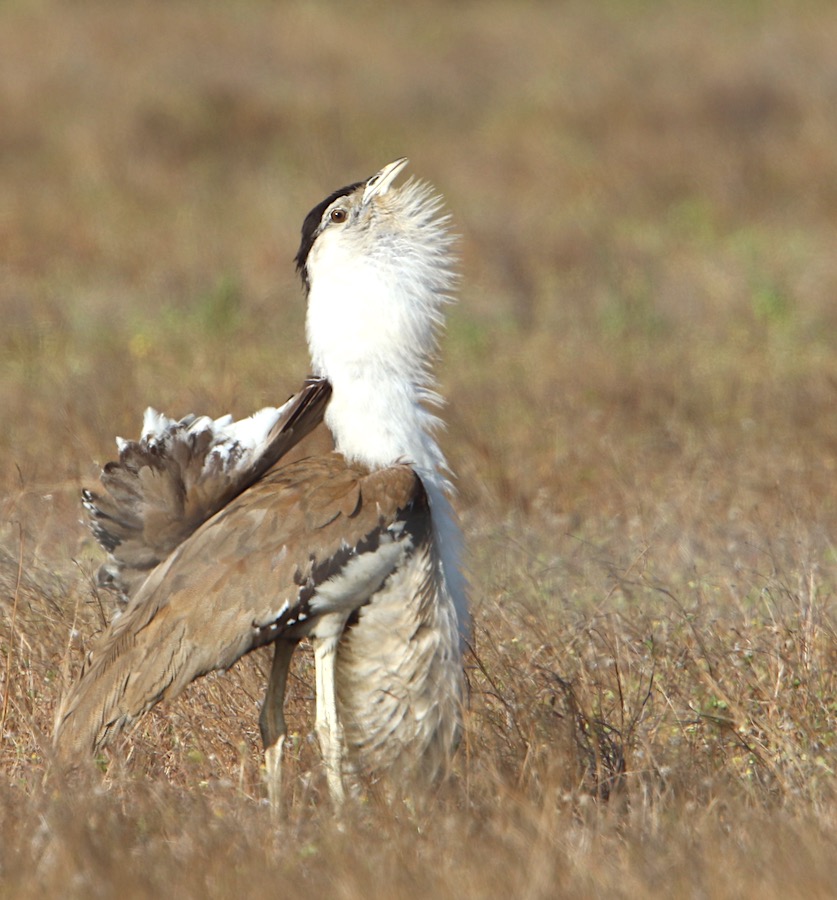
Australian Bustard
Azure Kingfisher
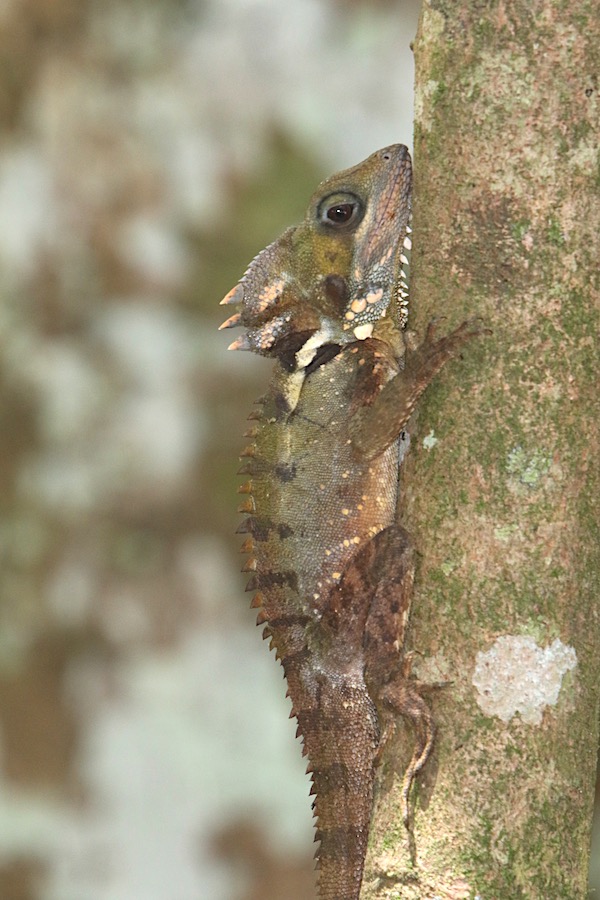
Boyd's Forest Dragon
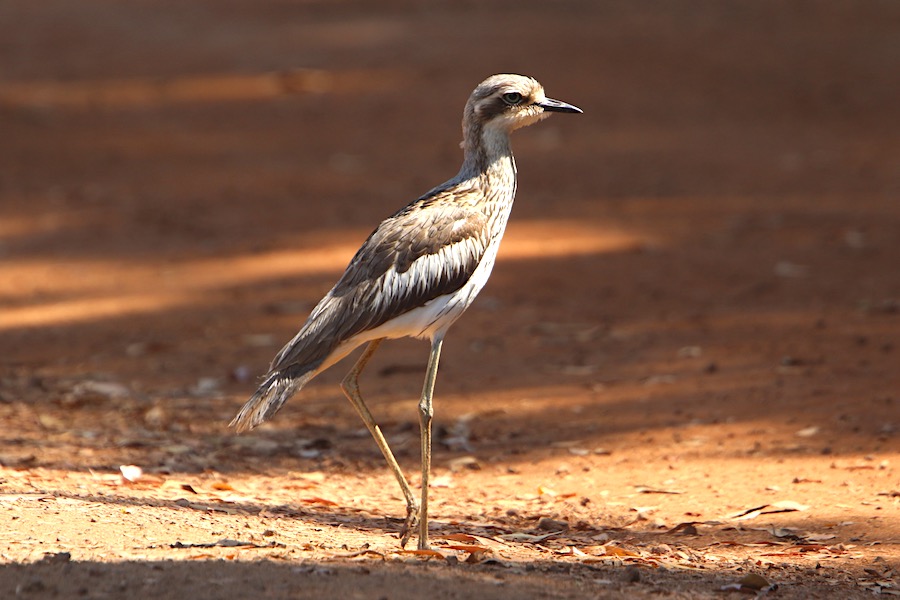
Bush Stone-curlew
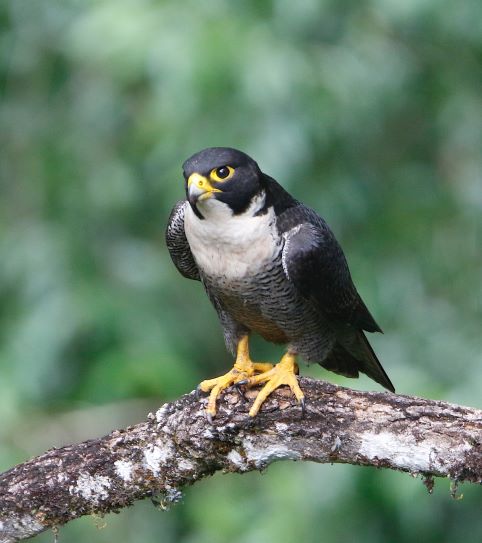
Peregrine Falcon
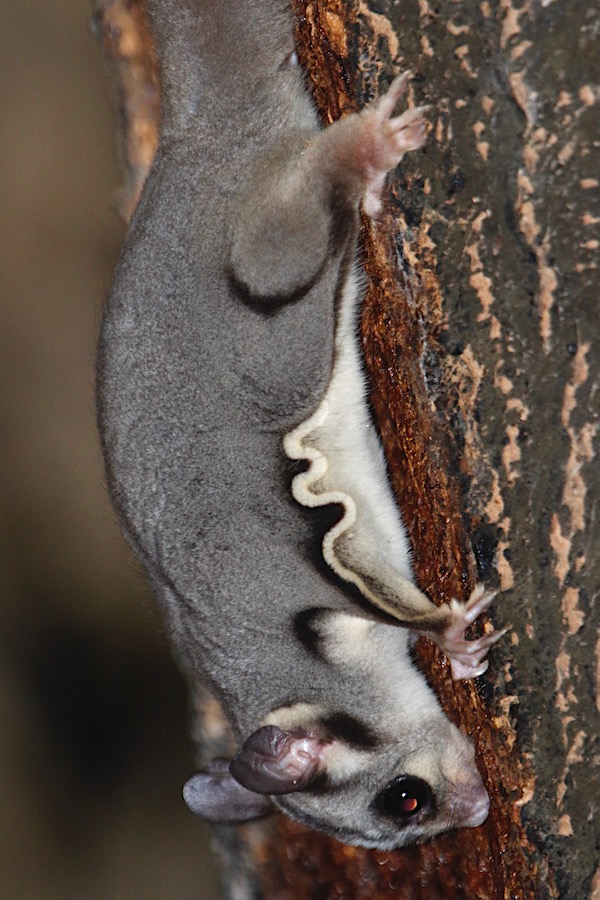
Krefft's Glider
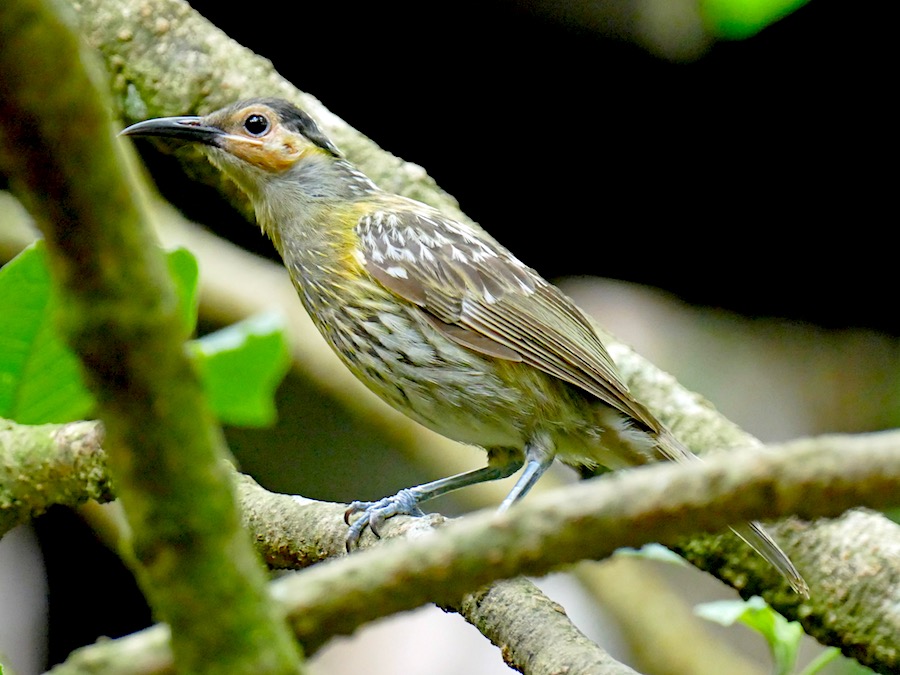
Macleay's honeyeater
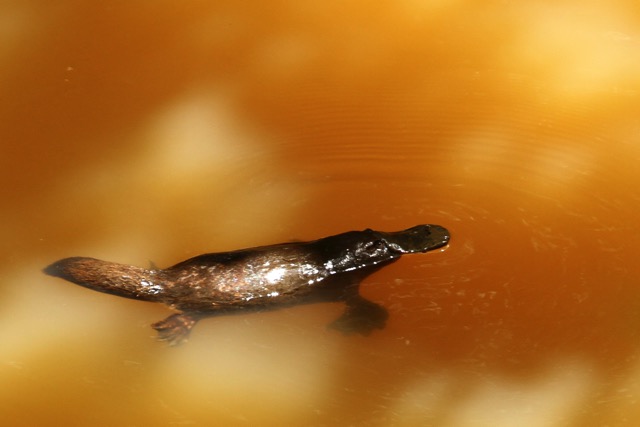
Platypus
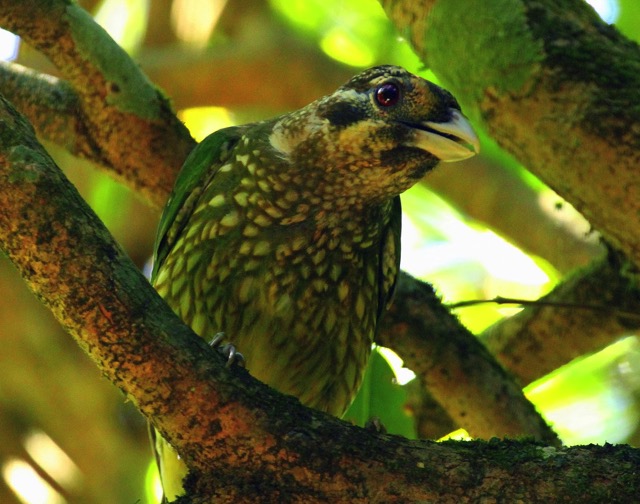
Spotted Catbird
Squatter Pigeon
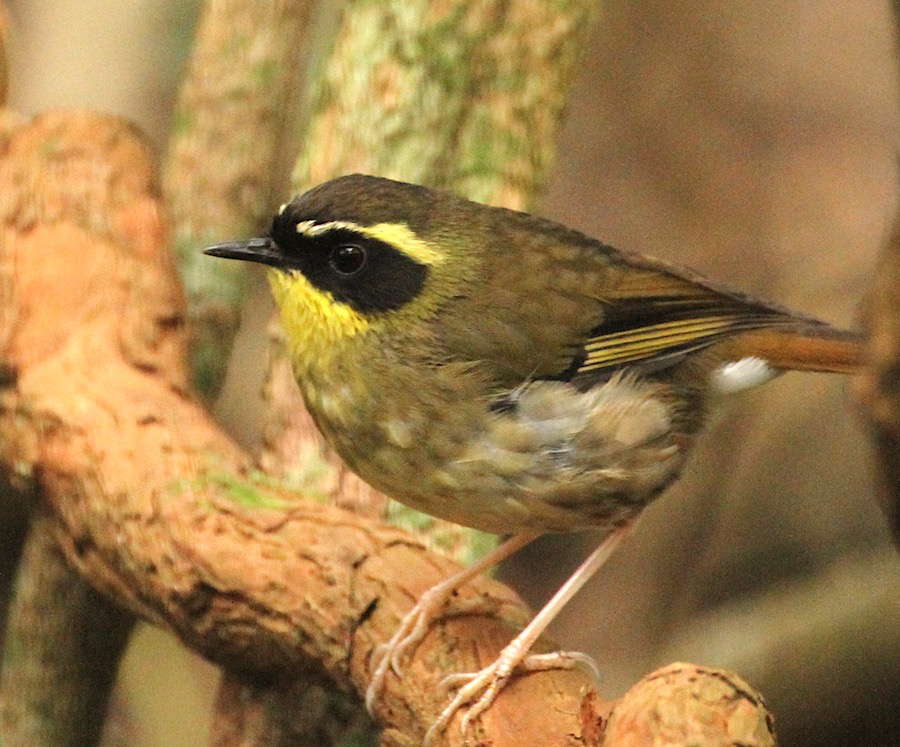
Yellow-throated Scrubwren
October 25:
Rich Hoyer reports from Bolivia
With a great group and nearly perfect weather from start to finish, the first of my two Bolivia tours couldn’t have gone much better.
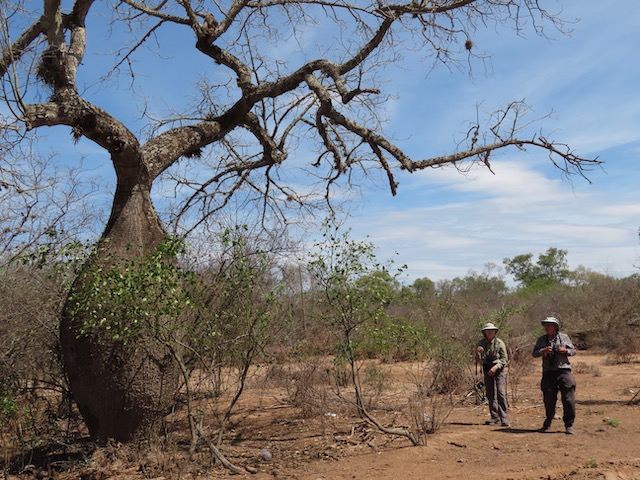
We first birded the Chaco, where the silk floss tree Ceiba chodatii defined the landscape and made our birding anywhere else in Bolivia feel so different.
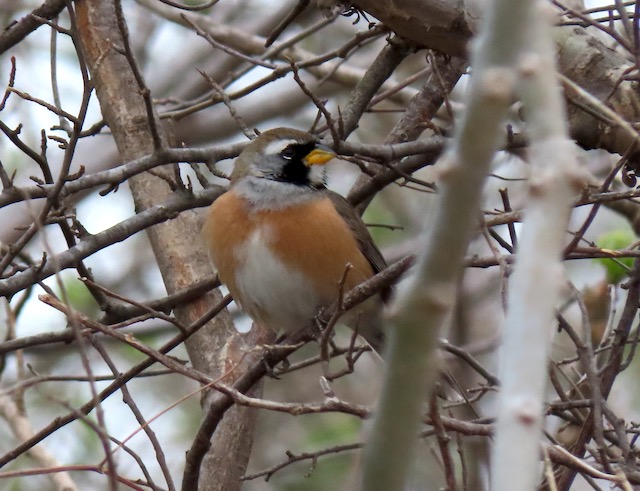
Here we found Black-legged Seriema, Crested Hornero, Lark-like Brushrunner, and Crested Gallito, among many others. Oddly, Many-colored Chaco-Finch was missing from the usual sites, but we were lucky to find this lovely species at the northern fringe of its winter range.
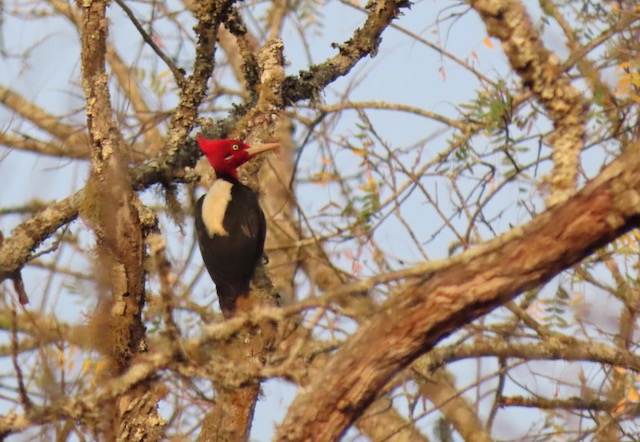
We birded the Chaco foothills, where a “flock” of eight Andean Condors entertained us, as did a pair of extraordinary Cream-backed Woodpeckers.
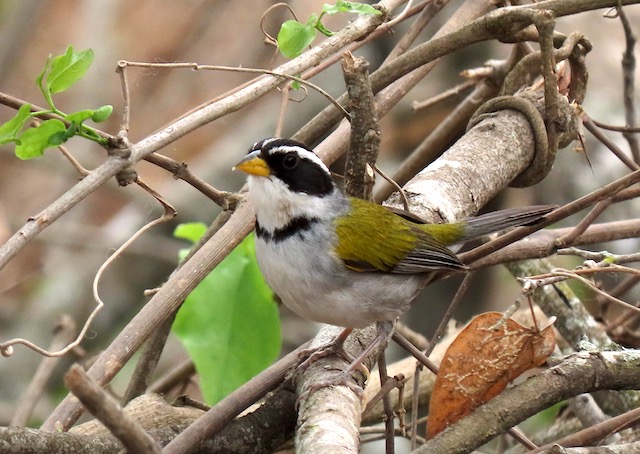
One of the group’s favorite birds from this area was Moss-backed Sparrow, recently split from the more easterly Saffron-billed Sparrow.
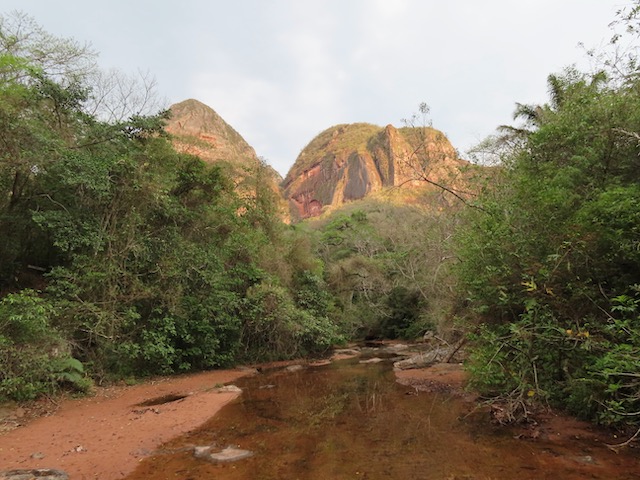
A stark departure from our usual routine was our stay at the otherworldly Refugio Los Volcanes, where birding began outside our rooms and the scenery was hard to fully comprehend.
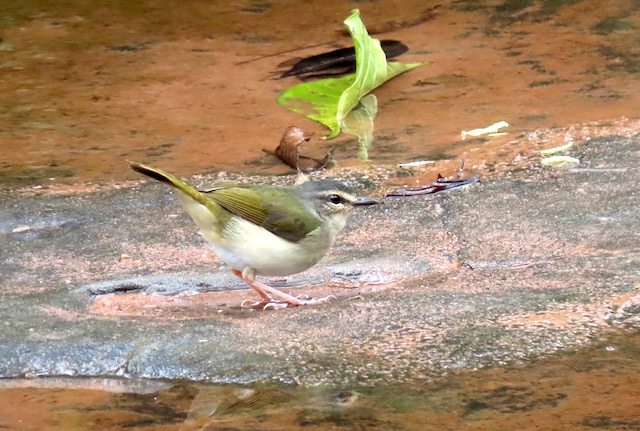
One of the more memorable birds from here was a pair of super tame Riverbank Warblers.
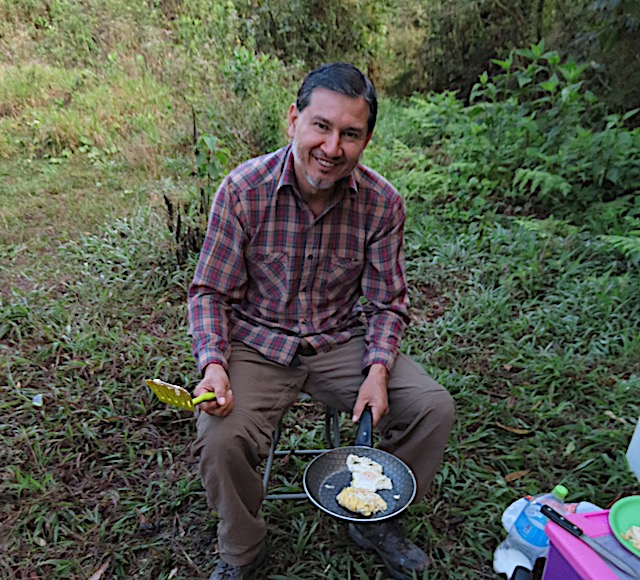
On the remaining part of the tour, the mornings usually first began with a drive to our birding destination, but it was always a toss-up whether the day’s primary anticipation lie with the exciting birds we might see or with the amazing breakfasts prepared by our friend and driver Herman and his wife Anita.
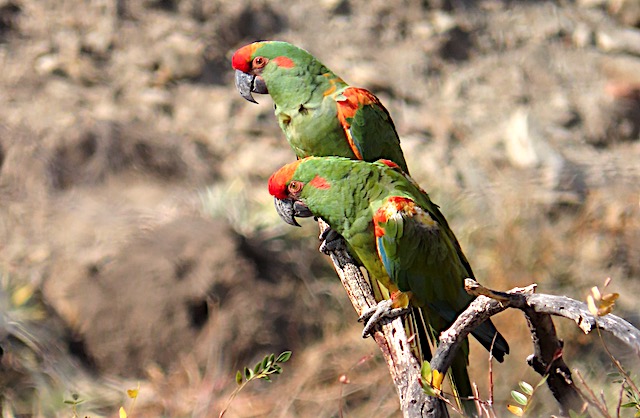
Bolivia’s “Valle Zone” harbors so many endemic species in every category, it’s hard to leave here with just two days of exploration. We were lucky to have such amazing views of the endemic Red-fronted Macaw on our morning in the Mizque River valley.
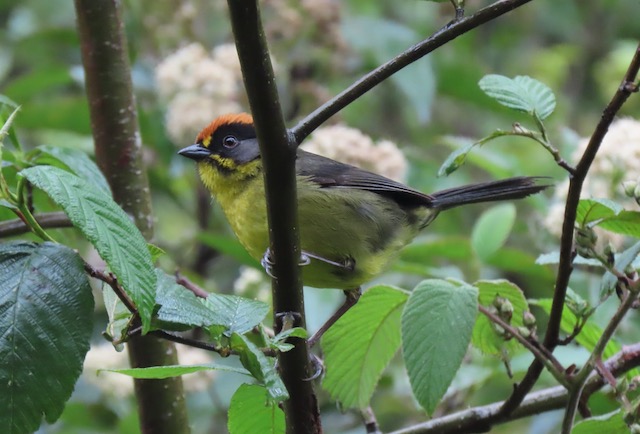
The cloud forests of Siberia were good to us too, with Rufous-faced Antpitta and Trilling Tapaculo showing well with very little effort, and nearby the endemic Bolivian Brushfinch was effortless.
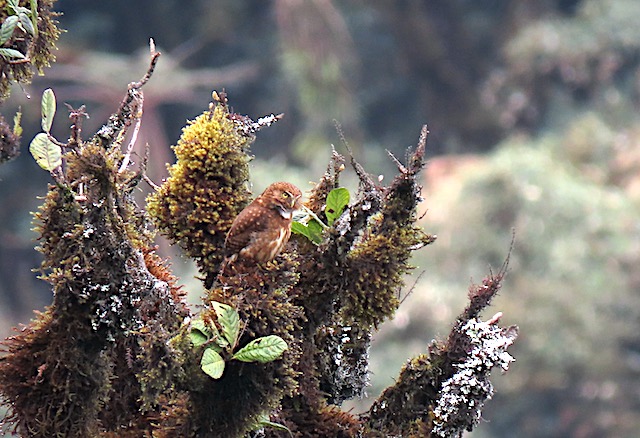
A Yungas Pygmy-Owl appeared in the same treeline cloud forest where we spotted Diademed Tapaculo, Black-chinned Thistletail, and White-browed Conebill.
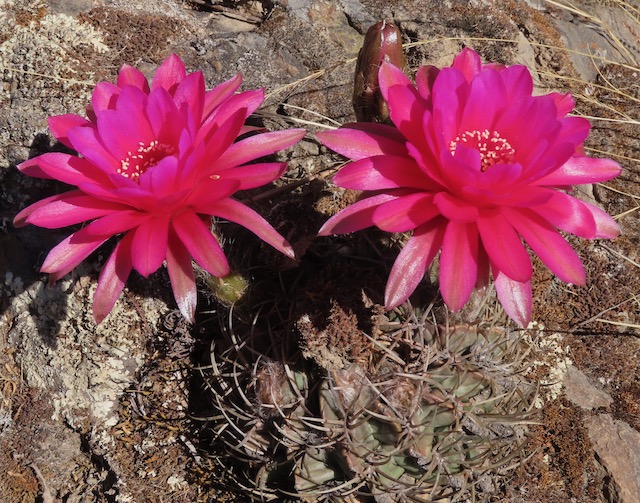
We completed the tour at Cerro Tunari with a concatenation of canasteros (five species in one area!), the very local Cochabamba Mountain-Finch, some fabulous blooming cacti...
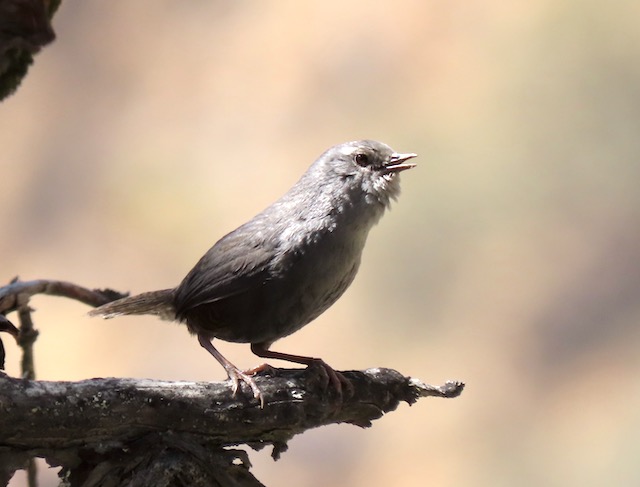
... a very bold Puna Tapaculo that hadn’t read the manual on correct Scytalopus behavior.
October 20:
Skye Haas: So Many Birds at Cape May!
Talk about a place that never disappoints, Cape May is always a winner of a tour due to its epically renowned volume of migrating birds. Add in Cape May is a charming tourist town full of great eats, and this being a short in length tour, one really gets a bang for their bird-bucks! After leaving our gathering place in Philadelphia, we headed down to Cape May and settled into our seaside motel for the duration of the trip we got cracking to start seeing all the marvels Cape May had for us. The main attraction at Cape May is often the Hawk Deck near the famous Cape May Lighthouse. Nearly our entire time there, a constant volley of Sharp-shinned and Cooper’s Hawks punctuated by Merlins and American Kestrels really gave the tour participants a chance to work on their raptors in flight skills. Several Northern Harriers, Broad-winged Hawks and Peregrine Falcons were also often observed much to our delight! And it’s not just raptors here- we had great looks at a number of dabbling ducks including a great look at a Eurasian Wigeon. And intermingling with the hawks overhead were truly stunning amounts of Tree Swallows swirling around. One of the real treats of this tour is a morning trek into the salt marshes via a flat-bottomed boat that can get right up into the reed bank. This feature gave us particularly fantastic looks at Seaside and Nelson’s Sparrows. Point blank looks at American Oystercatchers, Clapper Rails and our only Brant of the tour were also highlights. To break up our Cape May time, we spent one day taking the ferry to Delaware where we spent the morning combing the coastal pine forest for migrant warblers as well as the adorable Brown-headed Nuthatch. We then headed up to Bombay Hook NWR were the shorebird numbers were just off the hook with hundreds and hundreds of Avocets, Black-bellied Plovers, Dunlin, Semipalmated Sandpipers and Short-billed Dowitchers. A number of stately Marbled and Hudsonian Godwits were sprinkled throughout the flocks and we were glad to have made it to the refuge. But no trip to Cape May would be complete without talking about the amazing warbler migration that occurs here. We spent a couple mornings at Higbee Dike where CMBO conducts their songbird Morning Flight counts. Participants were stunned at the river of warblers, flycatchers and Northern Flickers that shot past. As the flight would slow down we would poke around some of the migrant traps as Northern Parulas, Bay-breasted, Palm, Black-throated Blues AND Greens, Redstart, Blackpoll and of course, Cape May Warblers furiously foraged to refuel for their next leg of their migrations. And on our last full day of birding, a stunning rarity had fallen out of the skies- a critically endangered Kirtland’s Warbler had been discovered! We hustled over to the dunes it was foraging in and after a quick search were treated to a great look at this first state record for New Jersey! For a complete list of birds observed and additional photos check out our eBird Trip Report
https://ebird.org/tripreport/77822
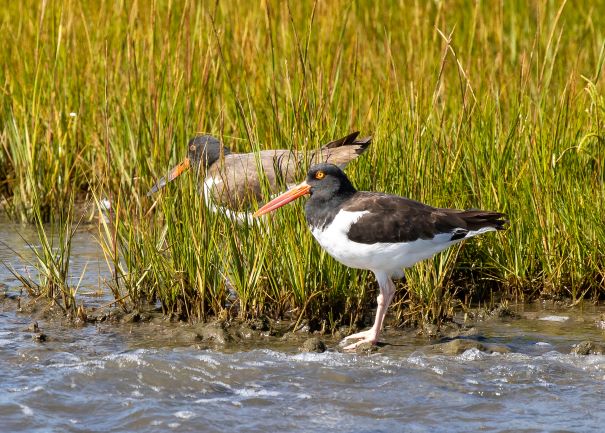
American Oystercatcher
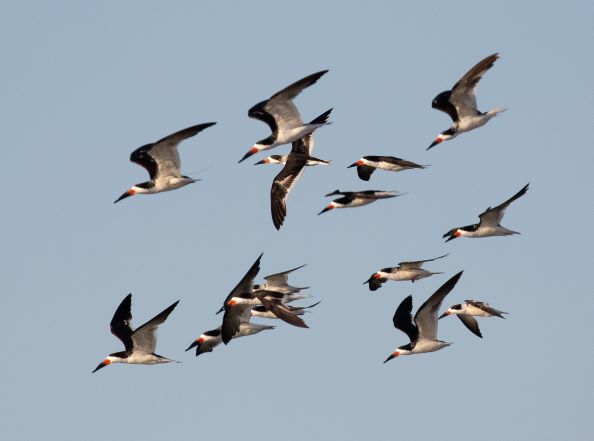
Black Skimmers
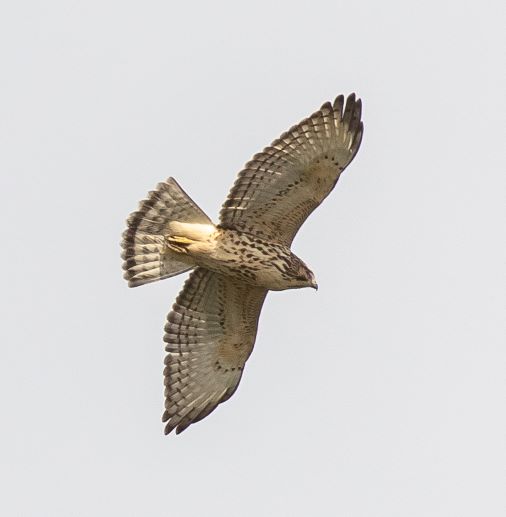
Broad-winged Hawk
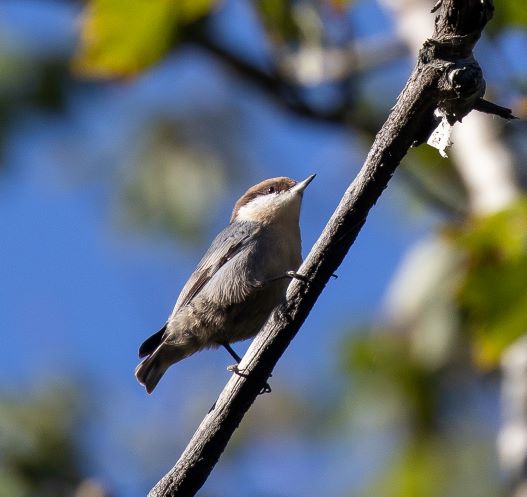
Brown-headed Nuthatch
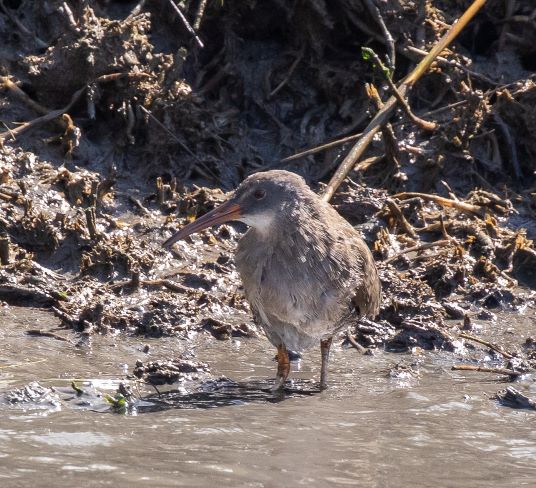
Clapper Rail
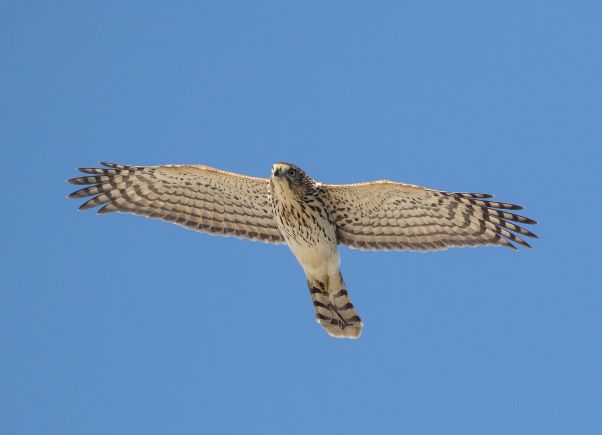
Cooper's Hawk
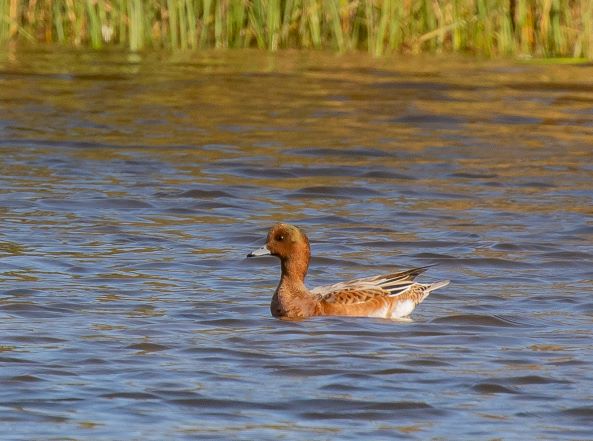
Eurasian Wigeon
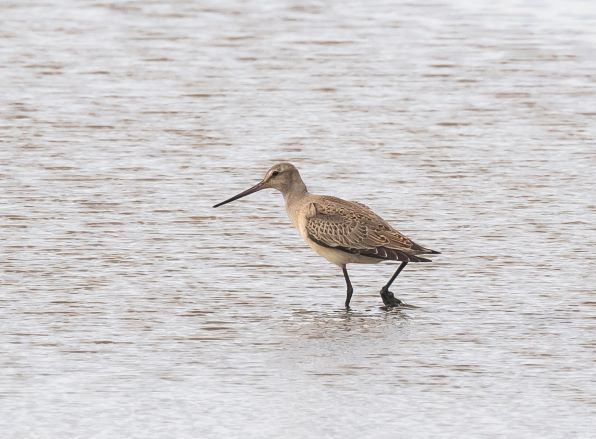
Hudsonian Godwit
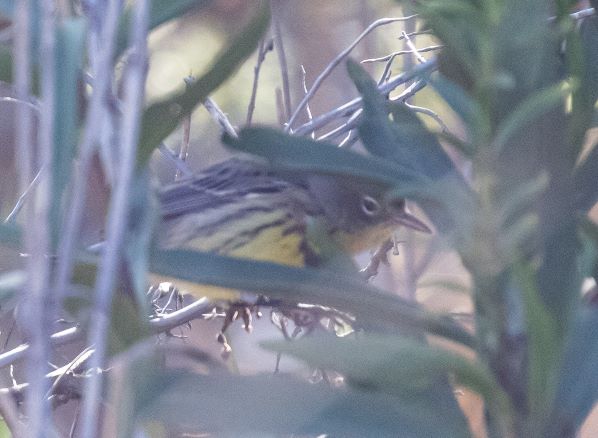
Kirtland's Warbler
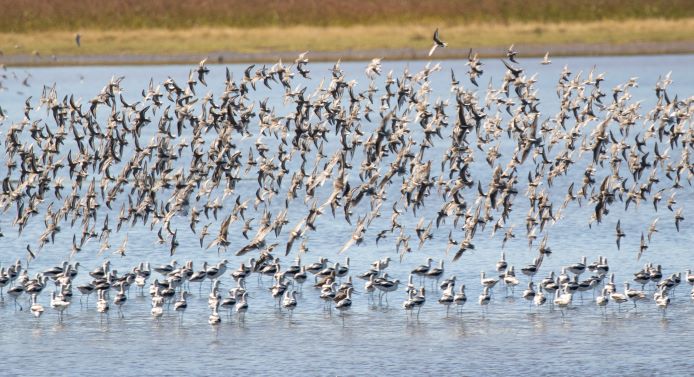
Mixed Shorebirds
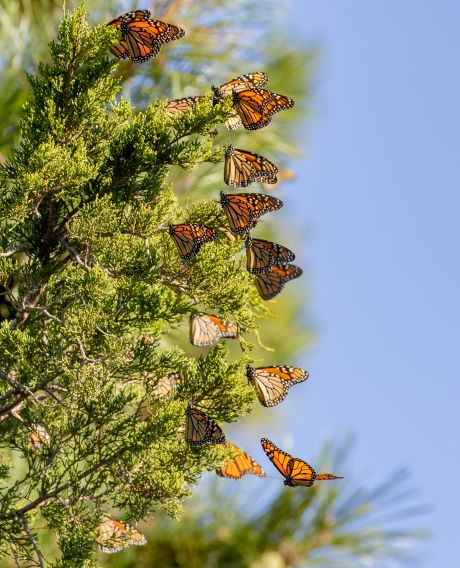
Monarch Roost
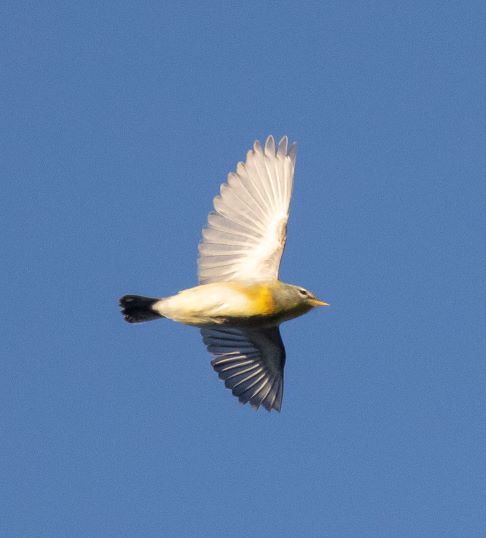
Northern Parula
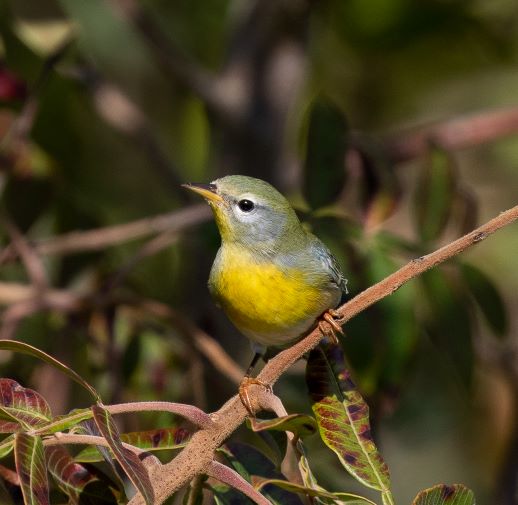
Northern Parula
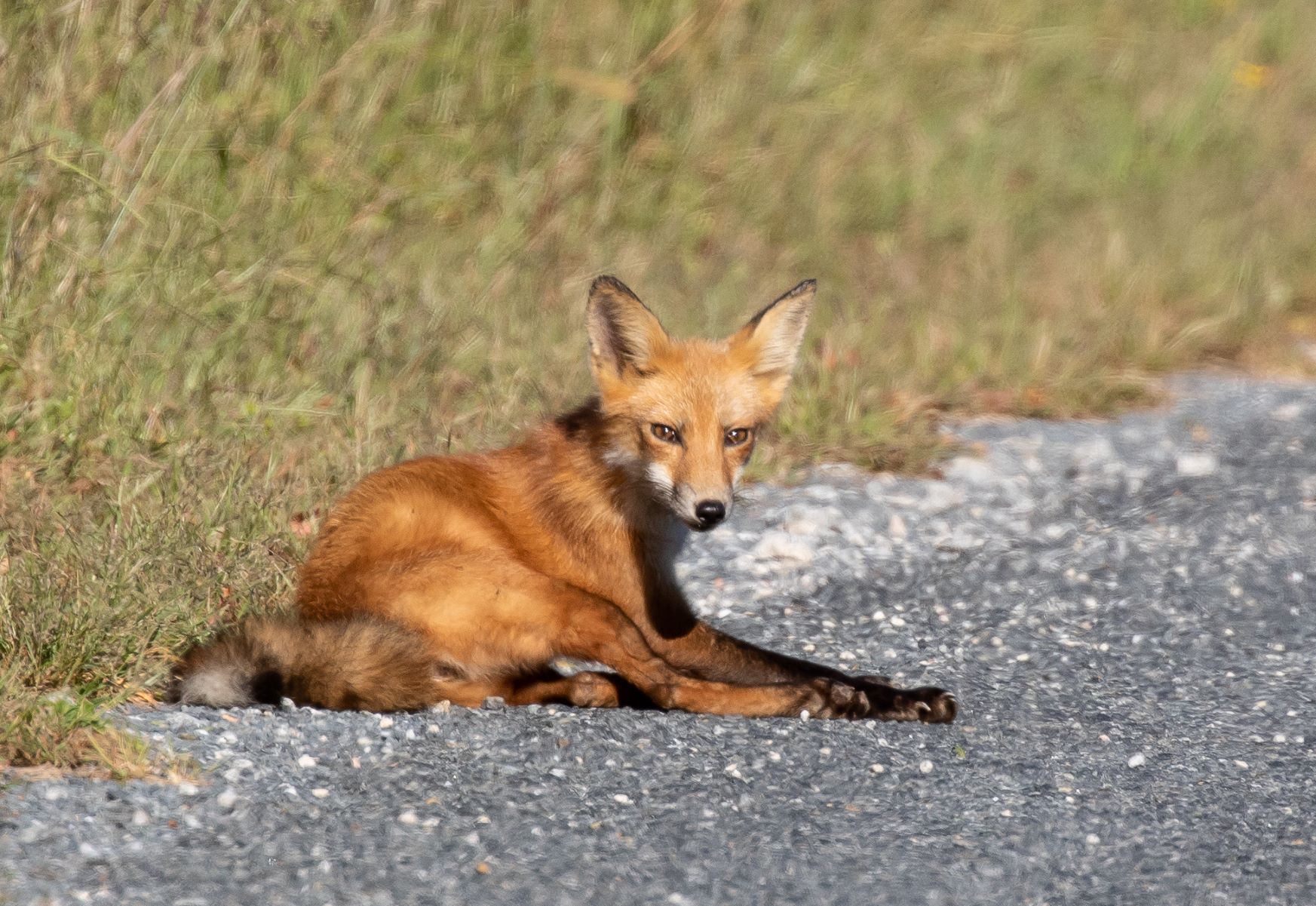
Red Fox
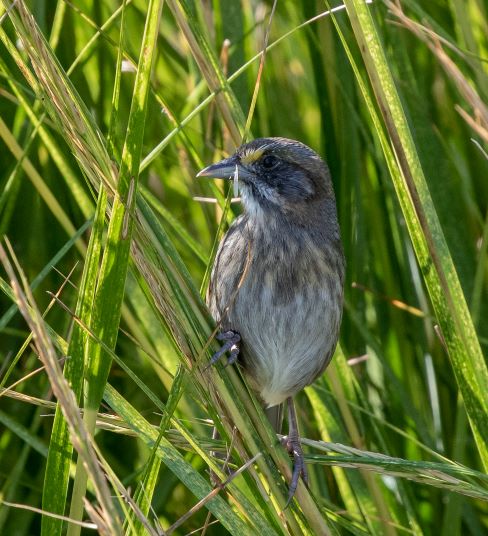
Seaside Sparrow
October 3:
Susan Myers: How I Saw One of the Greatest Enigmas in Ornithology
I am absolutely thrilled to be amongst the first birders, with my friend Yeo from Sarawak, to see the recently rediscovered Black-browed Babbler, a bird that until last year was considered to possibly be extinct after not being seen for almost 200 years. As the Oriental Bird Club declared “The Black-browed Babbler Malacocincla perspicillata, widely considered by experts the “greatest enigma in Indonesian ornithology”, has been sensationally rediscovered in the rainforests of Borneo more than 172 years after it was first seen.”
Yeo, my coleader on our Sarawak tours, and I travelled to Banjarmarsin in the Indonesian province of South Kalimantan on Borneo, from where we made a very long drive northwards to meet our local bird guides Slamet Tran Susanto and Muhammad Suranto, who unfortunately must make a living by exploiting forest resources in order to support their families. It was they who first brought this bird to the notice of Indonesian birders who went on to bring the news to the rest of the world. The four of us set out to a small area of limestone karst forest, an island in a sea of oil palms. After a short walk we heard a bird and soon had a pair perched at eye level in the forest, where we spent a couple of hours in the company of four birds altogether. What an amazing experience to see a bird which I wrote about in my Field Guide to the Birds of Borneo with the words “known from one specimen probably collected in South Kalimantan, possibly extinct.” Definitely one of my all time career highlights!
We hope that more birders can visit the area and see this remarkable species at the same time as having minimal impact on its continued survival as well as contributing to the local economy in positive ways.
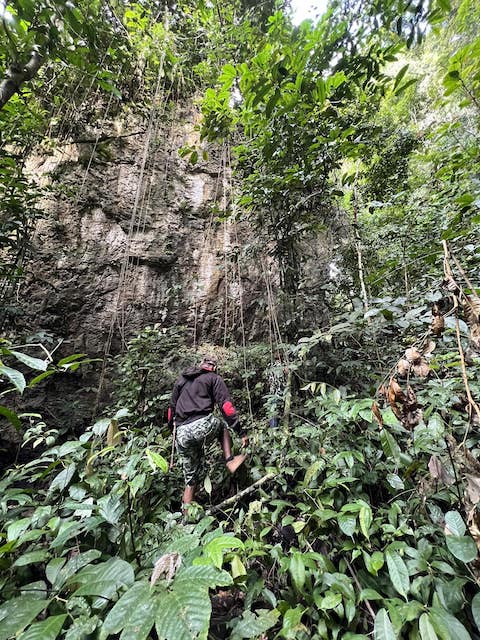
Climbing the karst.
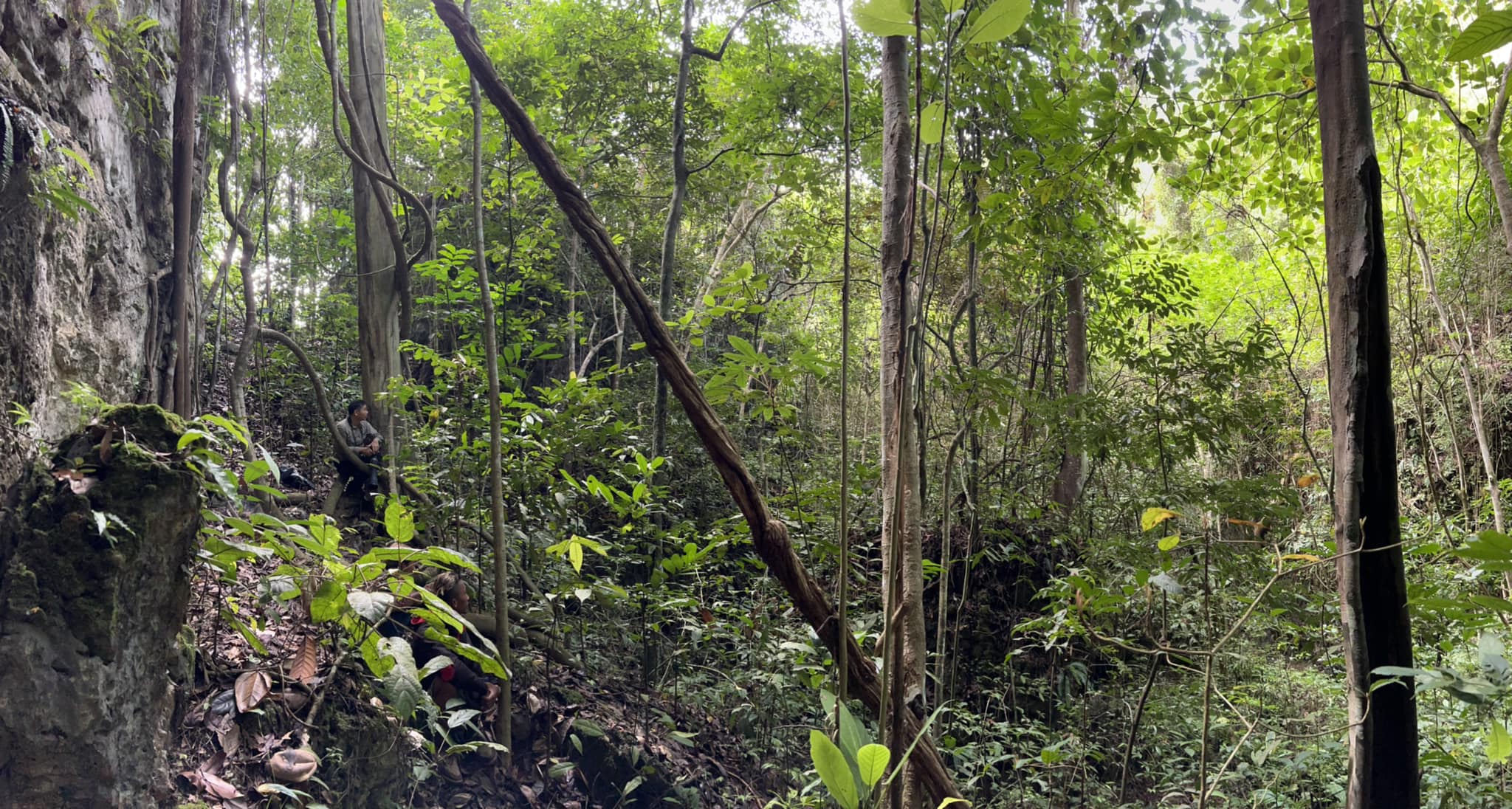
Waiting for the babbler.
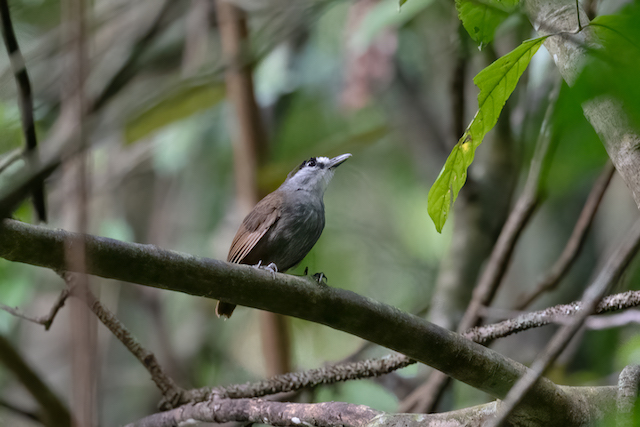
Black-browed Babbler
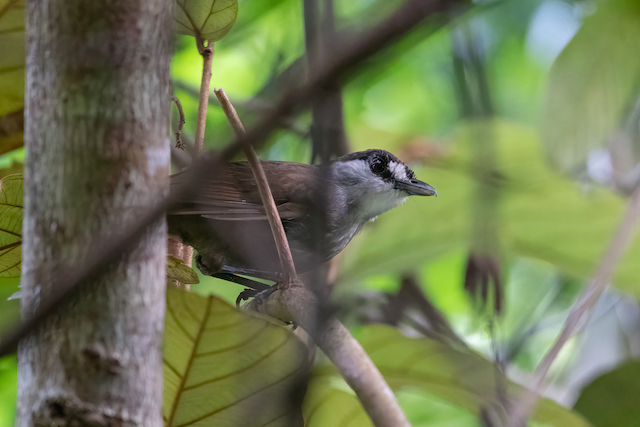
Black-browed Babbler
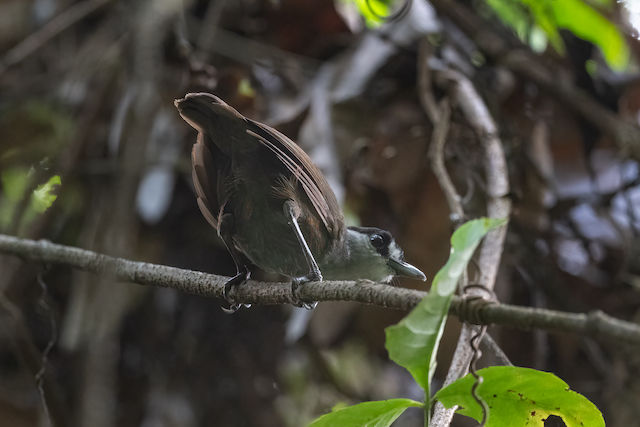
Black-browed Babbler

Celebrating with our guides and family
September 23:
Jake Mohlmann has just completed our always-popular Arizona & Utah tour and reports:
We just finished up our WINGS tour through northern Arizona and southern Utah, traveling just over 2,000 miles of paved and dusty roads, and coming across 205 species of birds while doing it. The scenery was simply stunning, and the wildflower show was spectacular throughout our entire journey proving the parched landscape received some good rains this year.
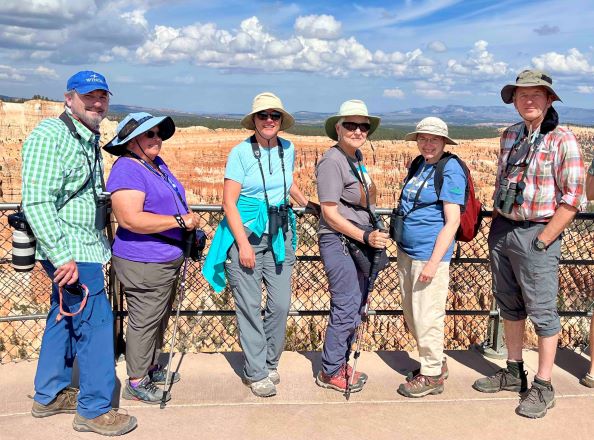
Our group enjoying Bryce Canyon’s famous amphitheater.
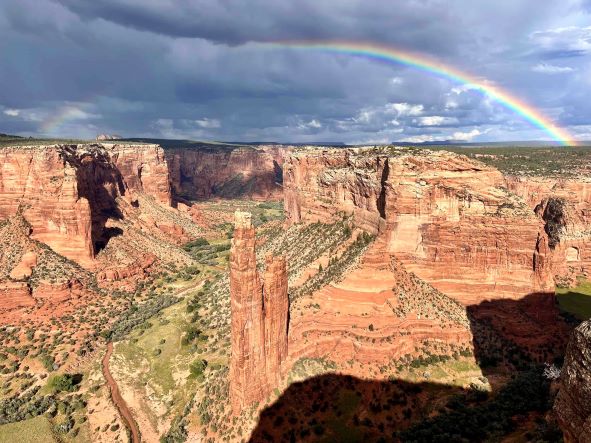
Rains brought a rainbow over Canyon de Chelly’s Spider Rock.
A complete surprise occurred when the group found not one, but two different White-winged Crossbills high up on the North Rim of the Grand Canyon. If accepted, this would constitute the third (and fourth) record for this species on Arizona’s state list. Not an easy task considering how many birders cover this popular birding state every year.
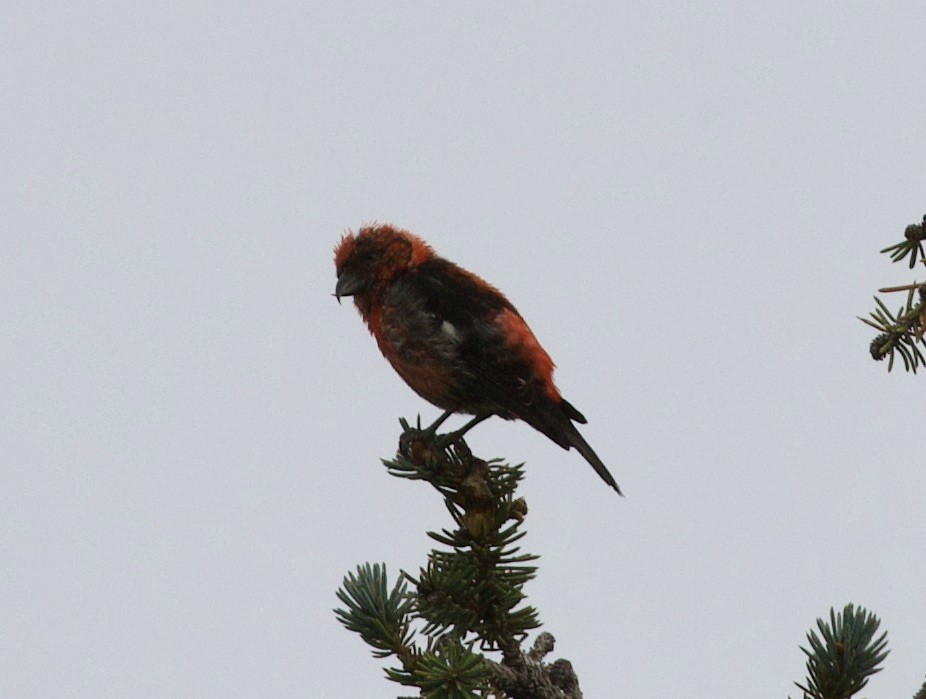
This male White-winged Crossbill will likely be Arizona’s fourth record.
There were many migrant birds we crossed paths with during our adventure. The southwestern Willow Flycatcher was seen multiple days, as well as other empidonax species like Dusky and Hammond’s. Even Say’s and Black Phoebes were seen multiple days rounding out our large flycatcher list for the tour.
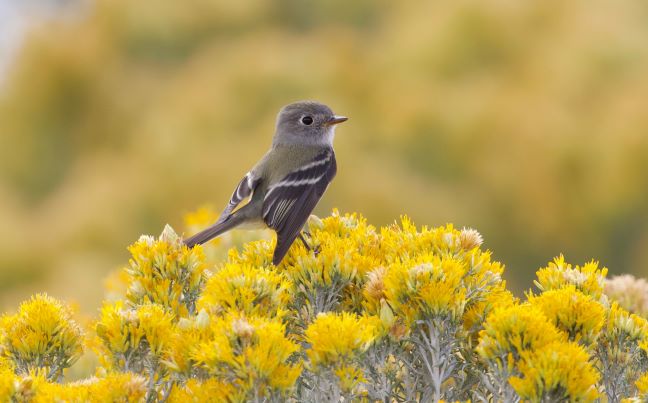
Hammond’s Flycatcher strikes a beautiful pose.
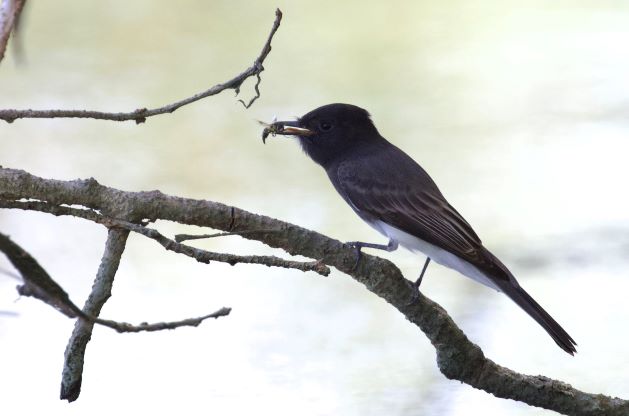
A Black Phoebe reduces the fly population by one.
Some days birds filled the skies. Whether it was flocks of American Robins plucking ripe juniper berries, or troops of Pinyon Jays flying over in formation, or even multiple sallying Townsend’s Solitaires all utilizing the same perch.
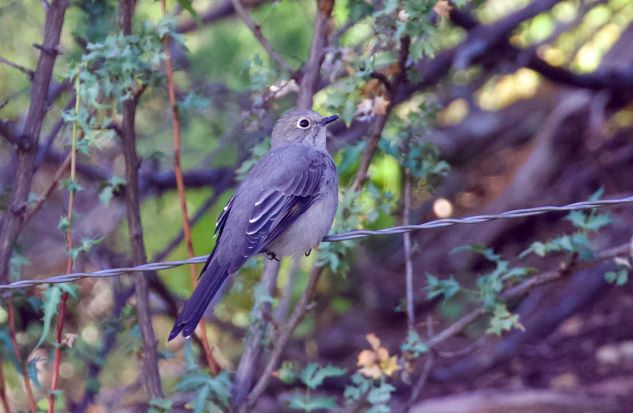
This Townsend’s Solitaire at Wenima was ‘whisper singing’.
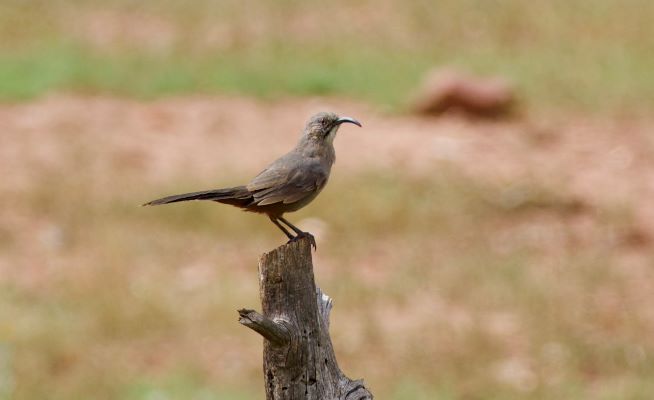
Crissal Thrasher was seen well. A statement not said often! A major highlight was getting amazing looks at a Crissal Thrasher along the Arizona Strip. This species can be extremely difficult to get a look at, and seems to taunt birders as it calls incessantly only to remain concealed in frustration.
Mammals tend to also be a highlight on this tour as it traverses latitudes from 1,100 feet in the Sonoran Desert all the way up to over 10,000 feet amongst alpine meadows and spreading coniferous forest. Although there’s a chance to see two subspecies of Bighorn Sheep on this tour, we were elated to see one. A pair of rams were roadside first thing in the morning and didn’t seem bothered with our presence.
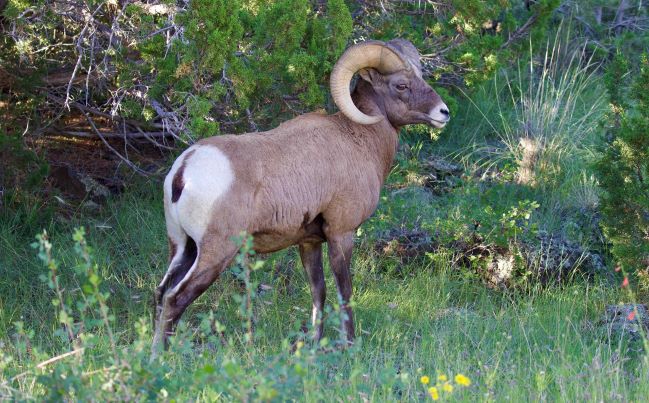
A roadside ram Rocky Mountain Bighorn Sheep.
A lot of the small mammals are nocturnal, but the ones we normally get to see on this tour often include the small Utah Prairie Dog, ubiquitous Rock Squirrel and Gray-collared Chipmunk. This chipmunk is endemic to east-central Arizona and southwest New Mexico, and awfully cute.
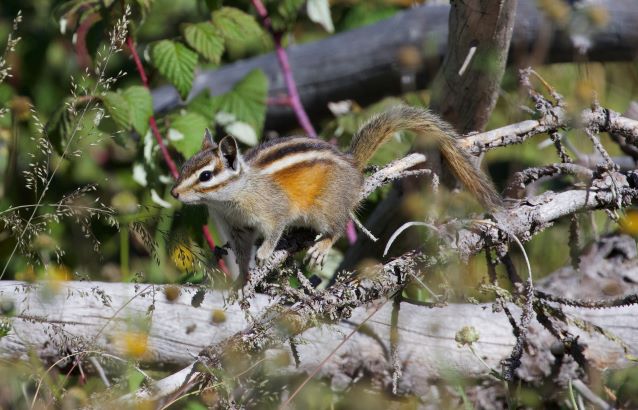
Gray-collared Chimpmunk in the White Mountains.
Cold-blooded creatures are few and far between once one leaves the desert, but we were lucky enough to add Plains Spadefoot Toad to the list at an ephemeral pond north of Flagstaff, as well as a Wandering Garter Snake at Sipe Wildlife Management Area.

Wandering Gartersnake sunning on a log.
A highlight in the odonatan department was a huge Common Green Darner whose wings seemed to glitter metallically as it winged along Luna Lake’s shore oblivious to the human onlookers wrought with admiration.
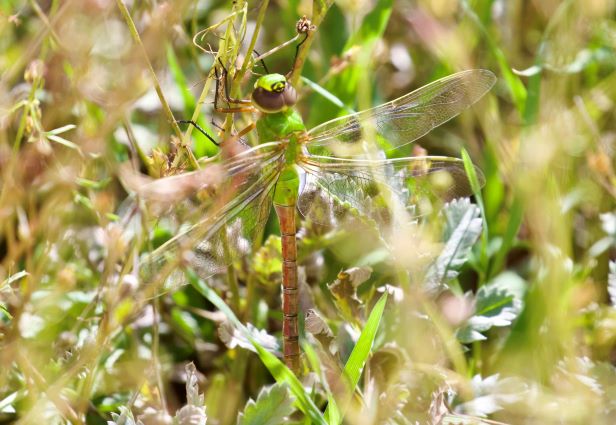
Common Green Darner seeking refuge amongst grass.
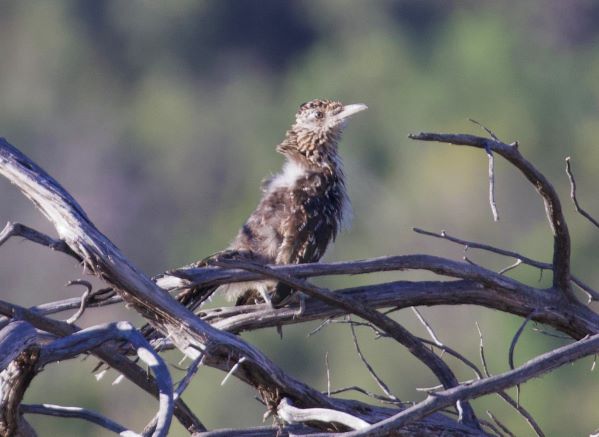
This Greater Roadrunner was a hit -- found while sunning in the early morning light.
A major highlight was getting amazing looks at a Crissal Thrasher along the Arizona Strip. This species can be extremely difficult to get a look at, and seems to taunt birders as it calls incessantly only to remain concealed in frustration.
August 31:
Rich Hoyer reports from our second Mato Grosso/Cristalino tour in Brazil
Our second Marvelous Mato Grosso tour this summer was in reverse order, so our first six days of birding in the Pantanal was an almost overwhelming barrage of birds and animals.
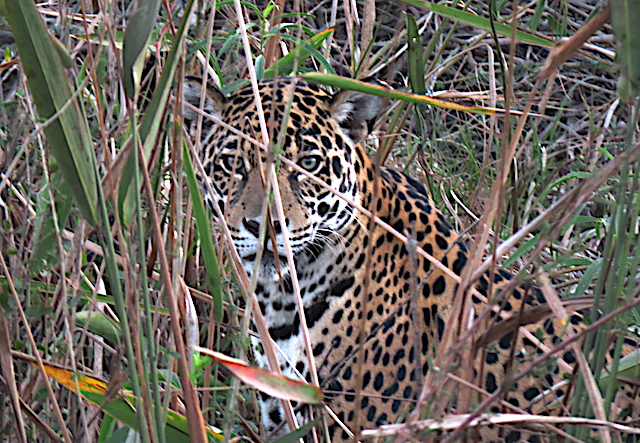
Though jaguar is certainly a target, even this modified itinerary was supposed to have saved this amazing animal for a Day 4 highlight. Yet before this tour was even six hours old, we jumped the gun by surprising a jaguar on the entrance road of our first lodge. The shy Nana, as we found she was named, had been seen only once before, photographed and named by researchers on a neighboring ranch only a couple weeks earlier.
Gray-cowled Wood-Rails were confiding and seen every day for a full week.
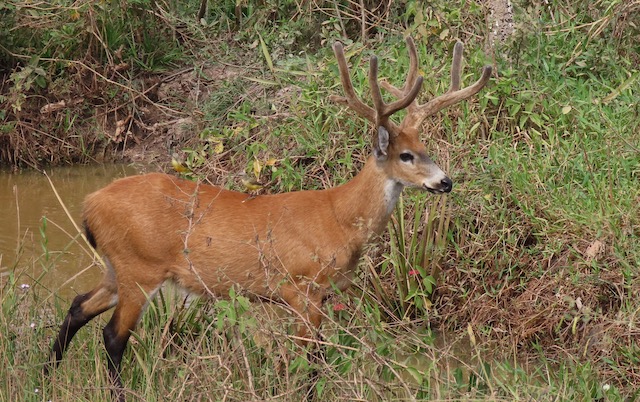
A Marsh Deer with a pair of Cattle Tyrant tick-eaters on its back posed nicely.
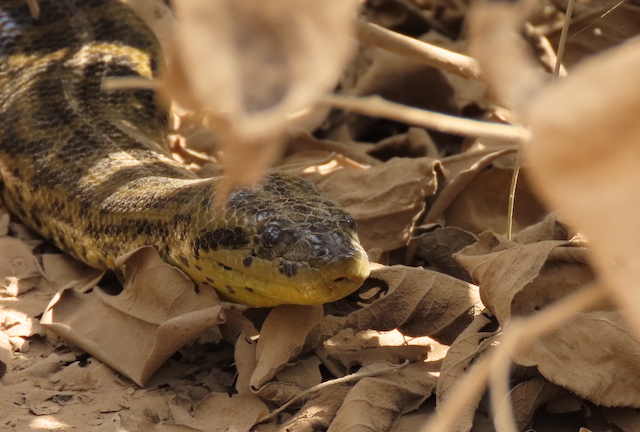
A Yellow Anaconda hunted along the side of the road, causing all passing vehicles to stop.
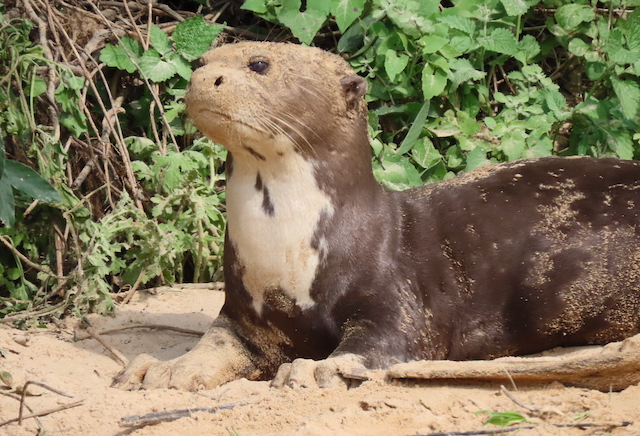
Our boat rides on the Cuiabá River resulted some fantastic experiences with families of Giant Otters.
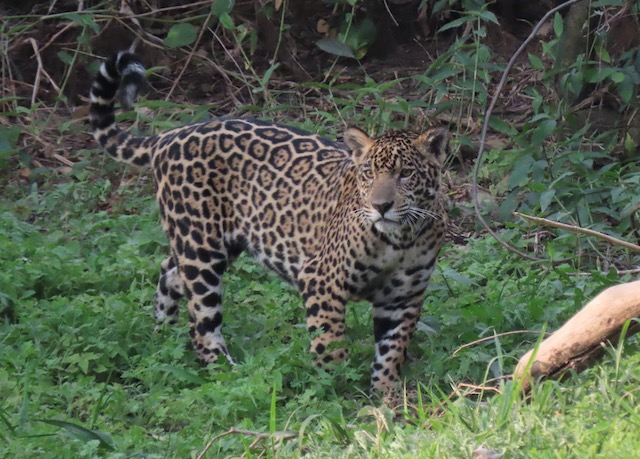
And in the end, we did have more amazing jaguar sightings. This young male, named Hays, was bothered by all the deer flies and rambunctiously came down to the river’s edge for a drink.
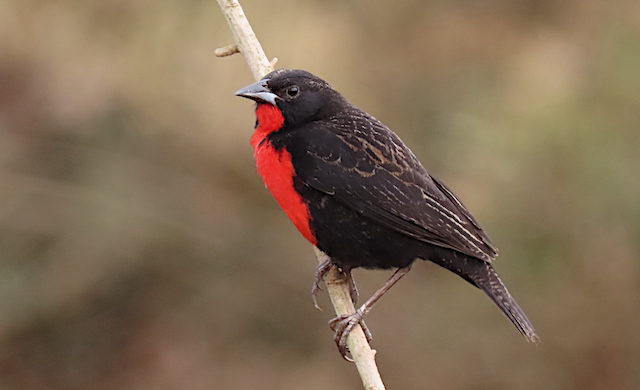
After the Pantanal, we made our way to Cristalino Jungle Lodge at the far northern end of the state, where Red-breasted Meadowlarks showed nicely on the road north of town.
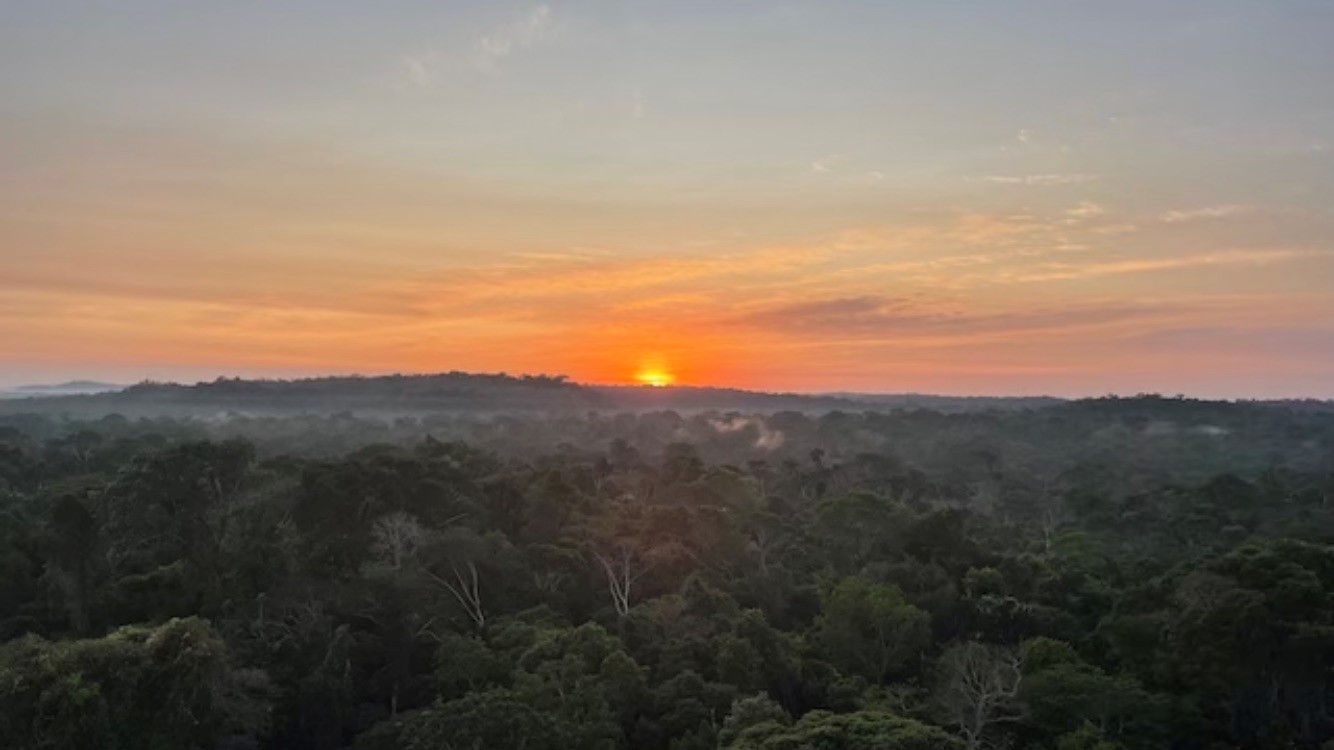
Birding from the two canopy towers at Cristalino was a highlight here, and sunrise with this view over one of the richest ecosystems in the word was a sight to behold.
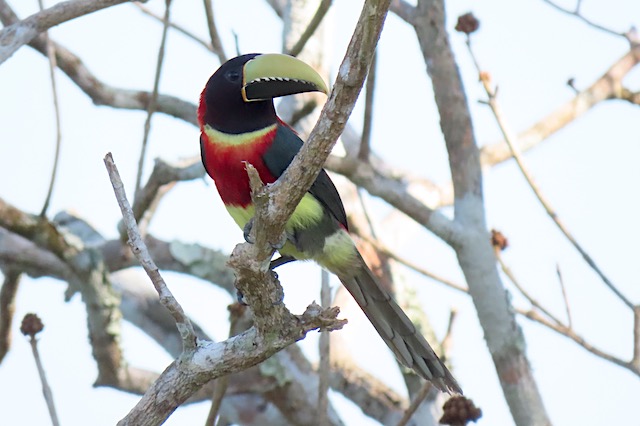
From the tower we had great views of Red-necked Aracari.
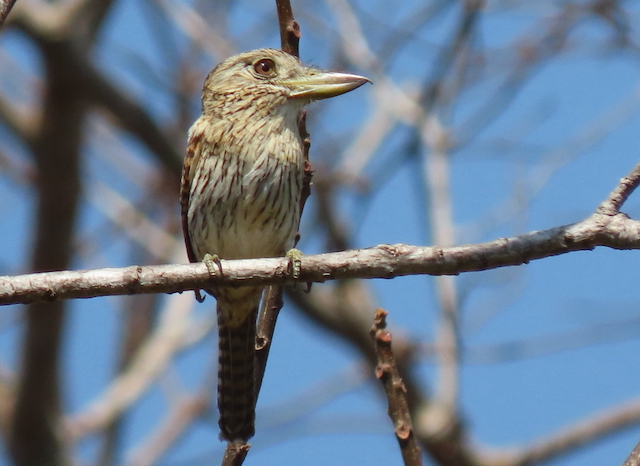
At the top of the granite dome called Serra I, a pair of Eastern Striolated-Puffbirds responded readily to a whistled imitation of their sad song.
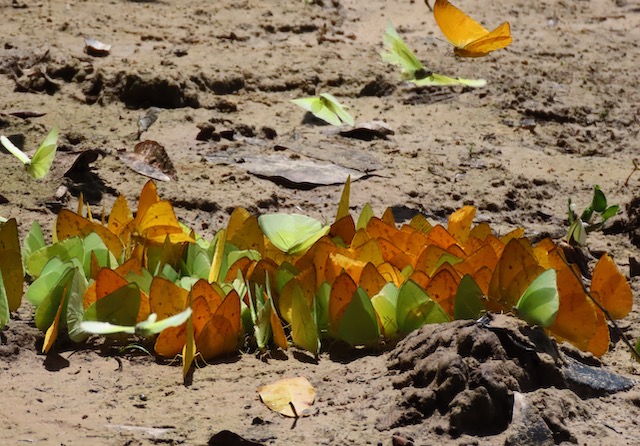
If you like colorful insects, the Amazon is the place to be. Vibrant puddle parties made up of several species of whites and sulphurs were often joined by various other species of butterflies.
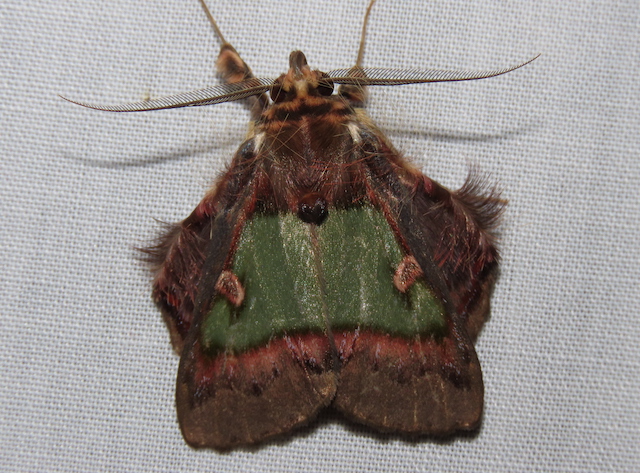
A moth sheet had a few interesting things to see each evening, such as this curious moth called the Emeraldine.
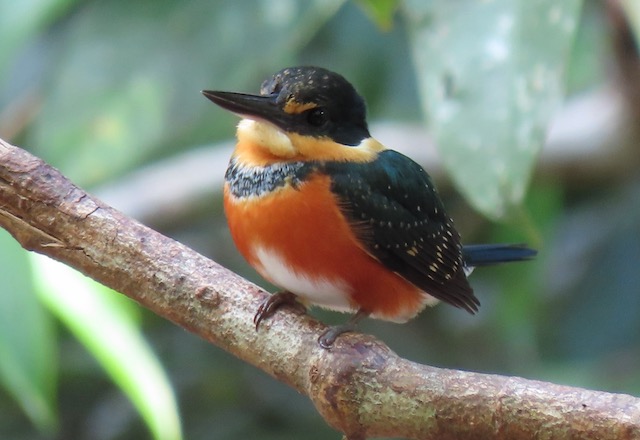
During this hot, dry time of year, bird baths within the forest were a great place to get views of difficult birds, and this confiding American Pygmy-Kingfisher was one of them.
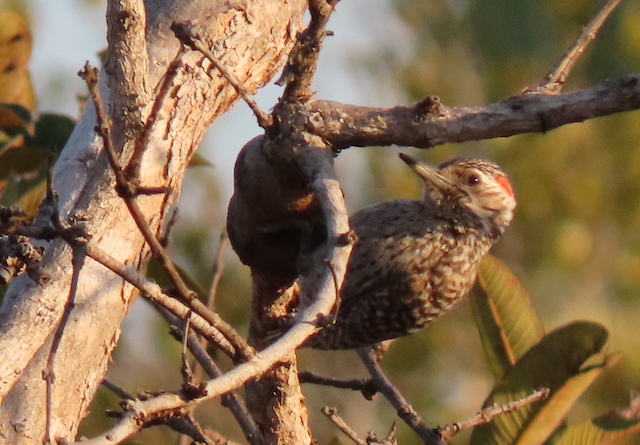
We finished the tour at the Chapada dos Guimarães area, a totally different ecosystem of dry scrub, woodland, and grasslands with some amazing birds. We were surprised on our first morning by this scarce Checkered Woodpecker.
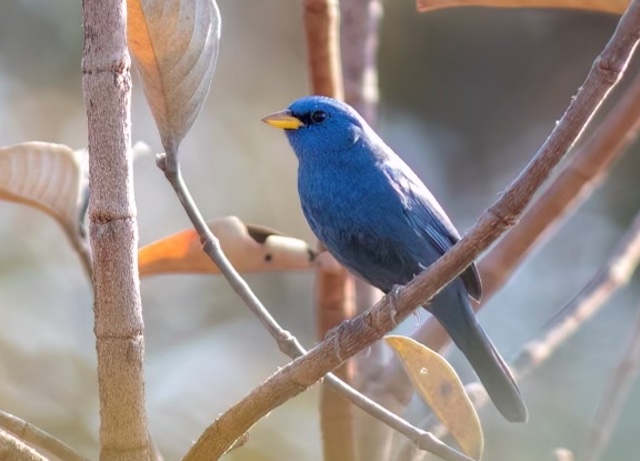
But the most exciting bird came on our last morning when this Blue Finch came in after nearly an hour of hopeful searching. Photo by John Sullivan.
August 23:
Jon Feenstra reprorts from Sani Lodge, Ecuador
We just got back from a fun and successful tour to the lowland Amazon Rainforest of eastern Ecuador. We were based for a week at Sani Lodge, as guests of the indigenous Sani Kichwa people who paddled us through their flooded varzea forest and took us to some great birding. Highlights included such signature birds as bizarre Hoatzins, sublime Agami Heron, six species of puffbird, five species of trogon, the local Cocha Antshrike, some manakins, and woodcreepers, and many more. Everyday was an adventure, some planned and some unplanned, but all part of the experience.
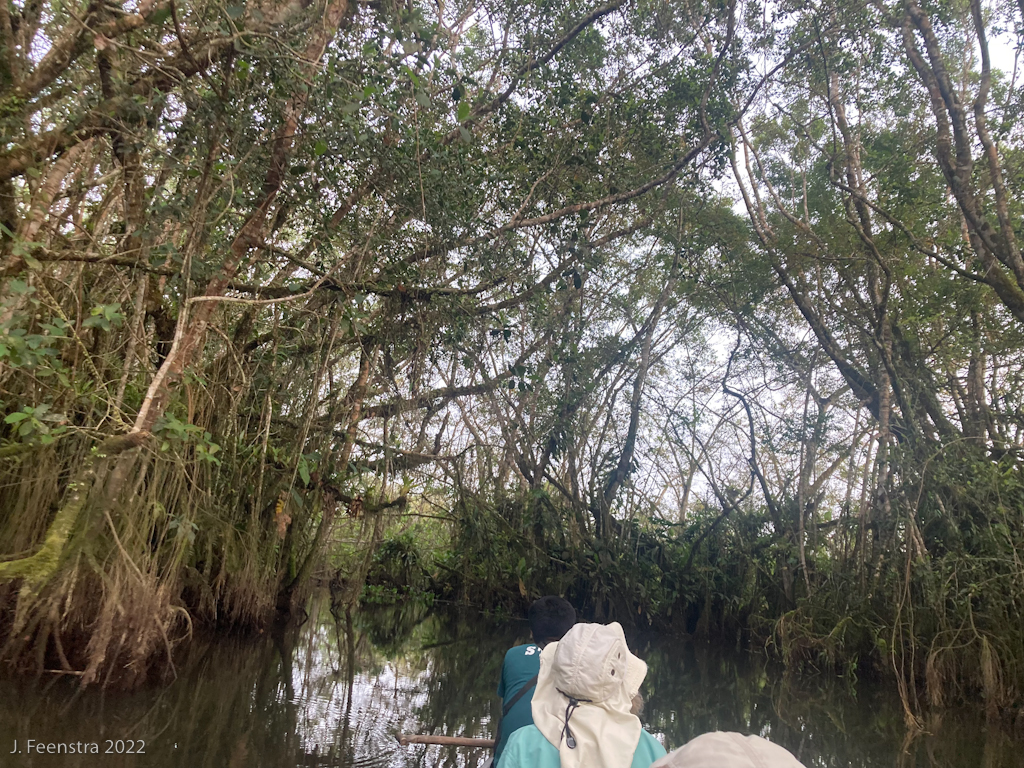
One of our many canoe-rides through the varzea forest around the lodge.
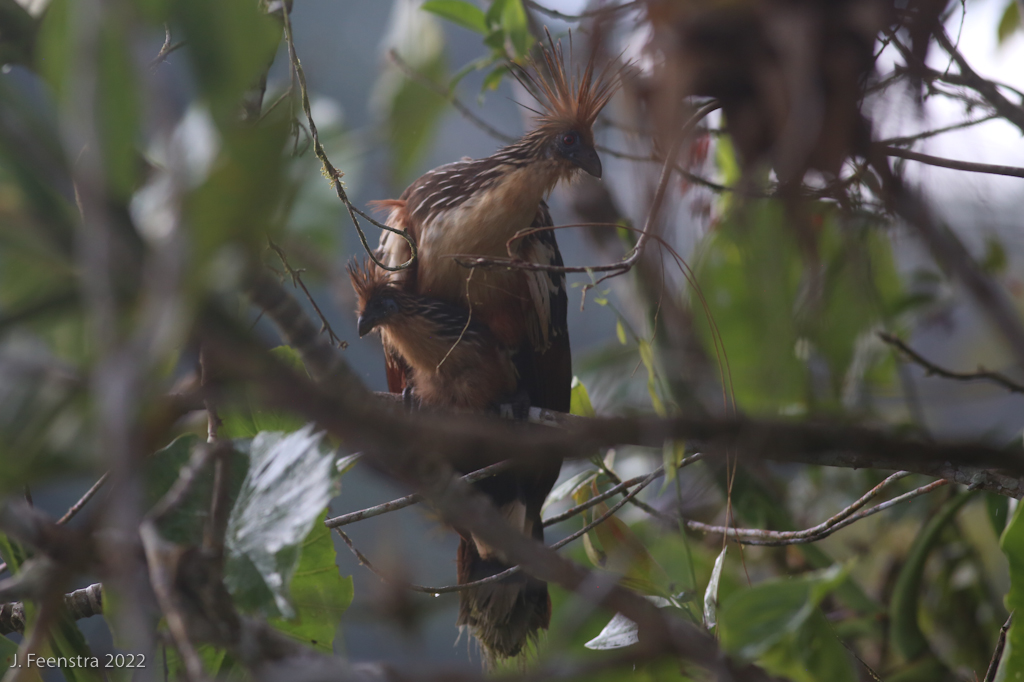
This adult Hoatzin somehow fit this nearly-grown juvenile Hoatzin into its breast feathers to keep it even warmer.
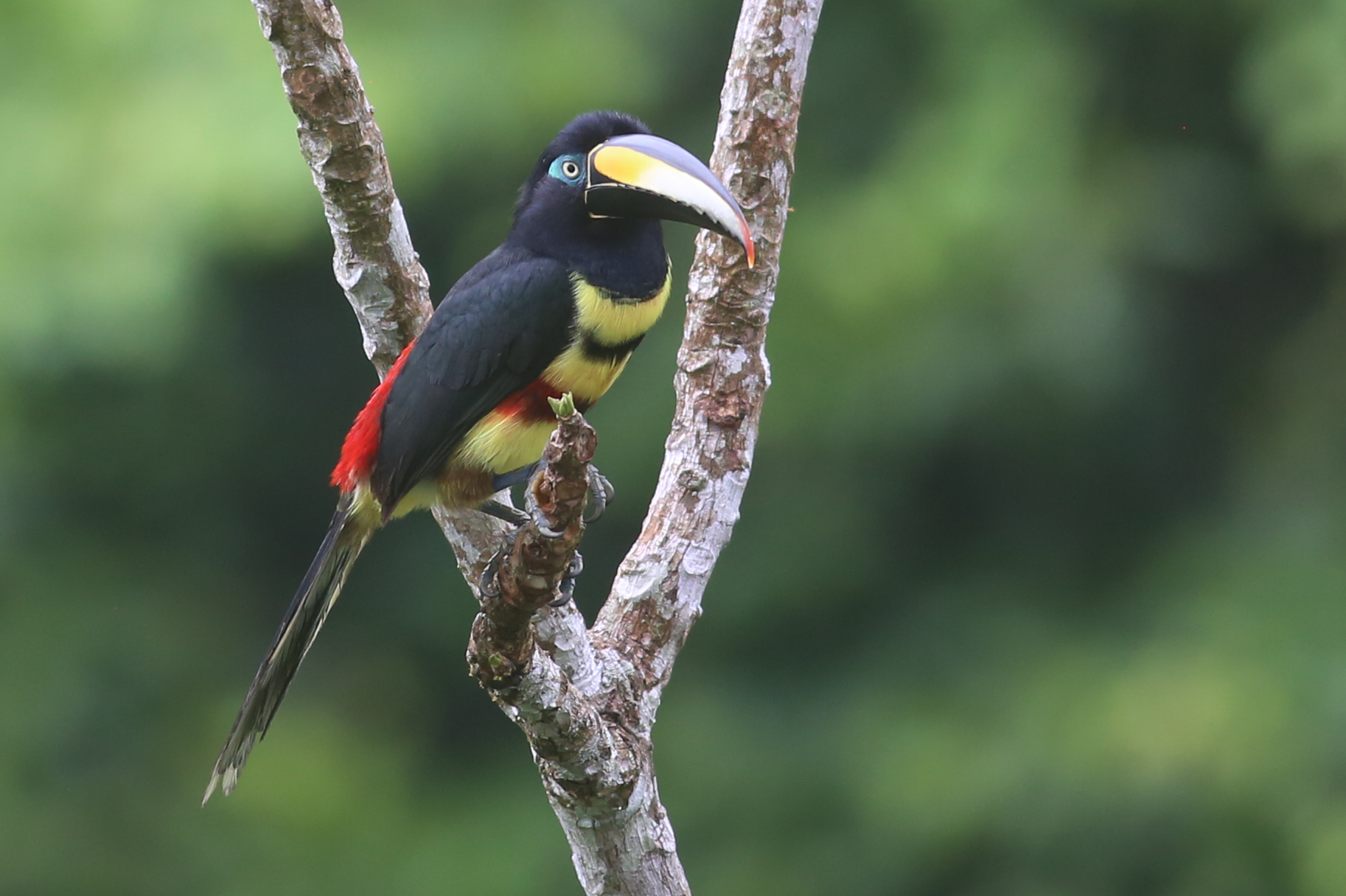
Many-banded Aracari was one of six species of toucan we saw, mostly from the lodge’s canopy tower.
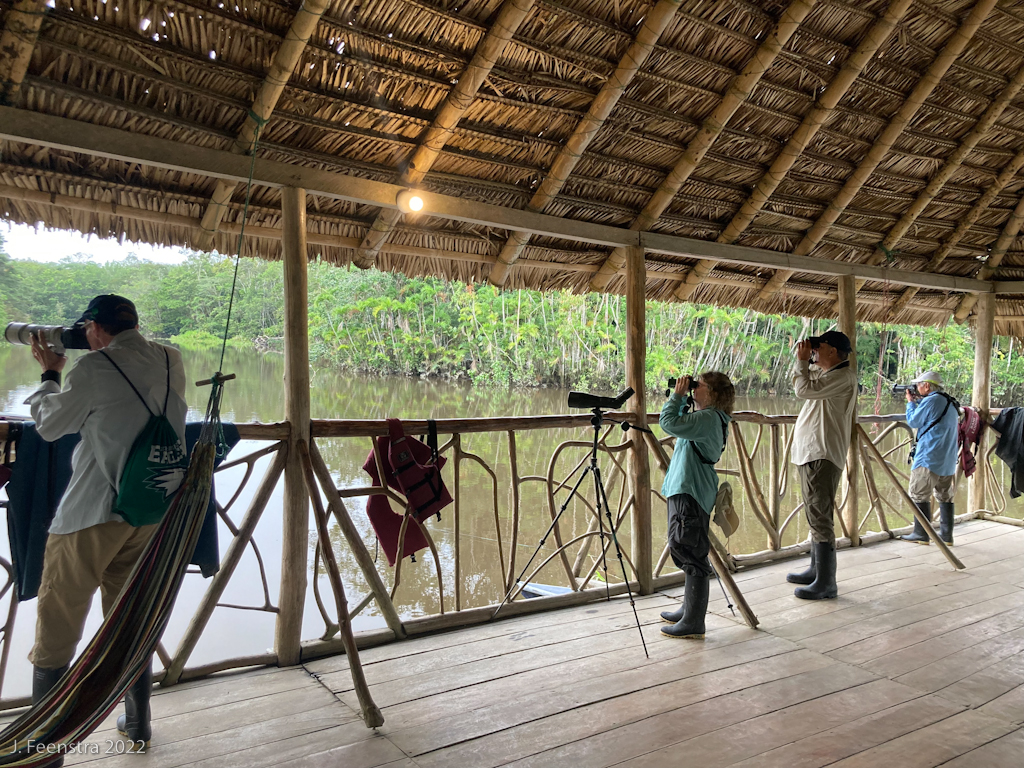
When raining or really sunny or pretty much any other time, the canopies parts of the lodge overlooking the lagoon were an easy place to watch birds, bats, caiman, turtles, butterflies, and whatever else happened to be hanging around.
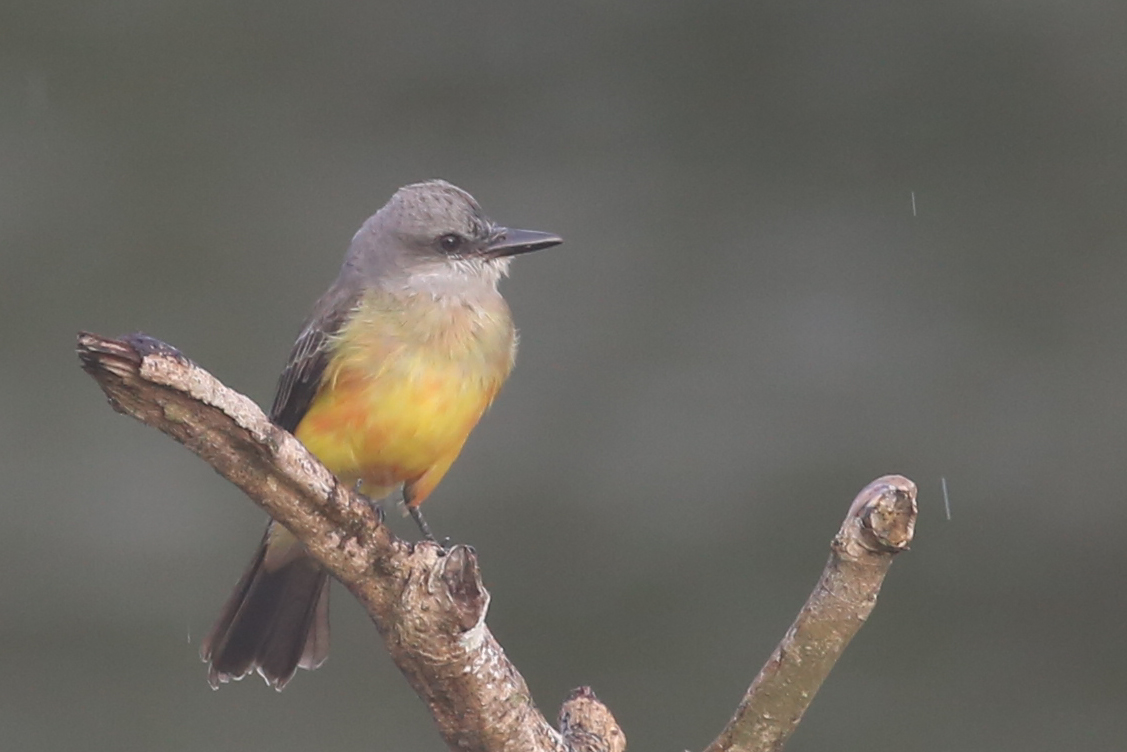
This orange-bellied (hyperchromatic?) Tropical Kingbird was a regular patron of some sticks just off the lodge porch. We got to study this fascinating weirdo just about every day.
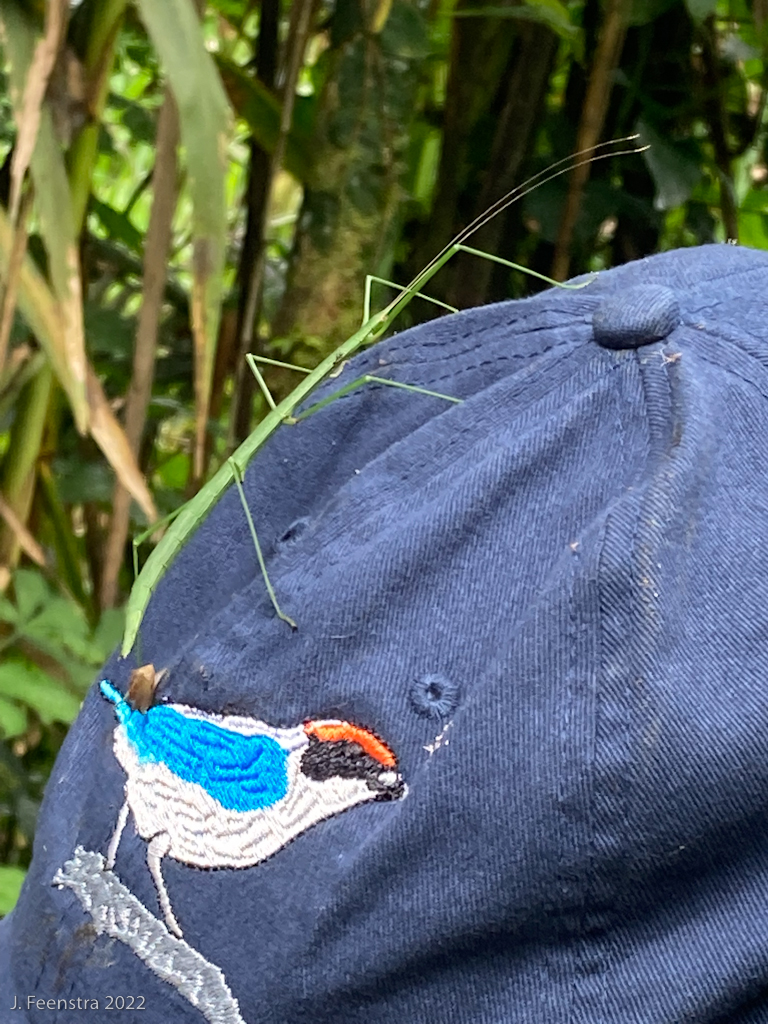
Well camouflaged by the greenery of the forest, this stick insect was a lot easier to see when it wandered onto a hat. The fauna of the Amazon is more than just birds, and we always stopped for the interesting crawlies.

